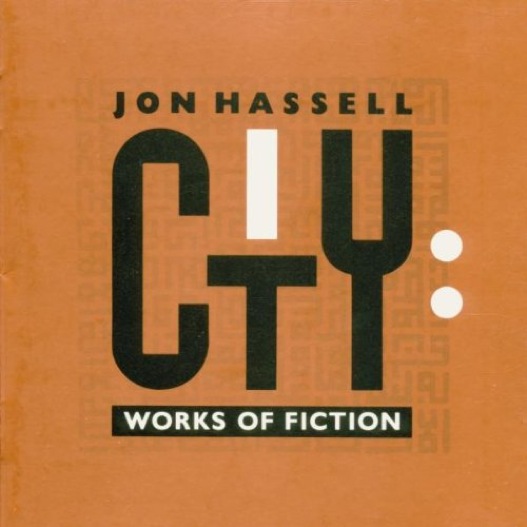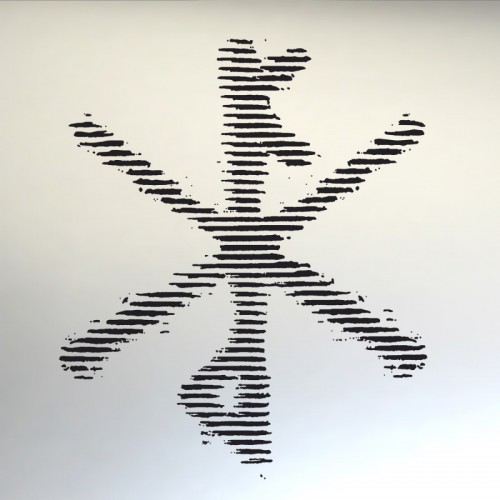Angus Maclaurin – Glass Music
Label: Bubble Core Format: CD
 Remember the mysterious sounds of finger-rimming wine glasses as a kid, how it hummed, and how it was so difficult to get that sound to be consistant and constant? Remember sitting at a dinner table, bored, beating on the water glasses with forks and knives until someone, probably your mum, had enough and insisted you stop. Remember stories of schizophrenics who fell apart at the sound of breaking glass? These are the images I conjured when presented with Glass Music. Expecting only a grown up version of experimental play, I was well suprised to find that Angus Maclaurin is so very far away from these familiarities.
Remember the mysterious sounds of finger-rimming wine glasses as a kid, how it hummed, and how it was so difficult to get that sound to be consistant and constant? Remember sitting at a dinner table, bored, beating on the water glasses with forks and knives until someone, probably your mum, had enough and insisted you stop. Remember stories of schizophrenics who fell apart at the sound of breaking glass? These are the images I conjured when presented with Glass Music. Expecting only a grown up version of experimental play, I was well suprised to find that Angus Maclaurin is so very far away from these familiarities.
In fact, his glass music rarely sounds like glasses. He’s tuned the glass, made sounds of it, recorded it, looped it and turned it all into something that starts from noises, ends up in melody. It was not suprising to read of his former occupations as a piano tuner and pipe organ builder. His glasses play out like a pipe organ. He seems to have just such a remarkable understanding of noises, sounds, and how to put them together to create music. I think he may have really epitomized what experimental noise/music should be. The result is a beautiful collection of songs, songs which conjure stories and scenes and fire a cinemagraphic imagination. Music which winds and twists and bellows out ethereal connotations of beauty and mystery. A chiming, rythmic symphony of noises, carefully weaved and crafted into gorgeous pieces. The resonances and the clarity of all the sounds working together, along with the inspirational themes and moods are like crystalized genius.
Glass Music plays well for background or as a feature, sort of morphing into the reality of hearing as the listener chooses. Angus is so far only playing live in the States, but will hopefully be on tour in other lands soon, an intriguing prospect indeed.
-LIlly Novak-
Mad EP – Eating Movies
Label: Ad Noiseam Format: CD
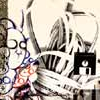 No, Mad EP isn’t the name of the CD, it really is the artist (Matthew Peters); yes, this confused me, too. Every month in The Wire there’s a page of ‘Hip-hop’ reviews, and I’ve always suspected that they have very little in common with DJ Jazzy Jeff and the Fresh Prince — I’m not an expert, but this slice of abstract East-coast mentalism would undoubtedly sit comfortably with most of them. When there’s rhyming, usually from MC Equivalent, it’s laid over some pretty ugly and awkward breaks (this is a compliment by the way), and when the beats are more conventionally ‘urban’ they’re arranged and engineered in a hard-edged, instrumental Industrial style that would have your typical bling-laden Rap producer running back to his bitches. And there’s much more besides.
No, Mad EP isn’t the name of the CD, it really is the artist (Matthew Peters); yes, this confused me, too. Every month in The Wire there’s a page of ‘Hip-hop’ reviews, and I’ve always suspected that they have very little in common with DJ Jazzy Jeff and the Fresh Prince — I’m not an expert, but this slice of abstract East-coast mentalism would undoubtedly sit comfortably with most of them. When there’s rhyming, usually from MC Equivalent, it’s laid over some pretty ugly and awkward breaks (this is a compliment by the way), and when the beats are more conventionally ‘urban’ they’re arranged and engineered in a hard-edged, instrumental Industrial style that would have your typical bling-laden Rap producer running back to his bitches. And there’s much more besides.
“Sail On” for example takes an trip into ambient Drum’n’Bass, while “Ride_072902” featuring the Manhattan Gimp Project sounds like the Balanescu Quartet being put through the production grinder, with trumpets and flutes set against train-track loops and improvisational electronics. And if Techno Animal were to remix one of Stockhausen‘s Klavierstucke series it would surely come out sounding like “Hz/Rmx”. Talk about a broken piano… Towards the end of the CD things get a bit more noisy and unrelenting, perhaps as a nod towards the label’s sensibilities. On that subject, this is the most diverse and unpredictable release from Ad Noiseam I can remember hearing. Good for them for trying something unusual, and good for FREQ for letting this remarkable release fall into my hands.
-Andrew Clegg-
Madonna Over Yorkshire – Madonna Over Yorkshire
Label: Irdial-Discs Format: CD
 The album which has caused the legendary Irdial-Discs to resurrect itself especially in order to release Madonna Over Yorkshire is the work of Philip Minns. The disc opens with a brightly-painted track of tumbling motes of electronic instrumentation which soon sweeps into a chiming weave of synthetic strings and descant vocal samples, watched under by the stalking trails of sussurant echoes and emergent drums and bass. With a well-composed drive into rhythm, the effect is at once Ambient and energetic, grasping the forward motion of the record and soon shifting it into another gear as the Saint Saens-inflected tone poetry of “The Swan” morphs into a concrete stop-start rewind in “the sort of place where dogs go”.
The album which has caused the legendary Irdial-Discs to resurrect itself especially in order to release Madonna Over Yorkshire is the work of Philip Minns. The disc opens with a brightly-painted track of tumbling motes of electronic instrumentation which soon sweeps into a chiming weave of synthetic strings and descant vocal samples, watched under by the stalking trails of sussurant echoes and emergent drums and bass. With a well-composed drive into rhythm, the effect is at once Ambient and energetic, grasping the forward motion of the record and soon shifting it into another gear as the Saint Saens-inflected tone poetry of “The Swan” morphs into a concrete stop-start rewind in “the sort of place where dogs go”.
The divergent lyricism of “Lap Pet Dancer” follows a course of Modernist percussion composition, highlighting the eclectic nature of the album; while the feeling that anything goes is only added to by the stabs of jarring distortion. As with fellow explorer of dark/light tonal dynamics Zan Lyons, Minns takes measures of shimmering beauty and rams them up hard against elements of noise and distortion to worthwhile effect. The stylings of the two are entirely divergent, however, with the sound of Madonna Over Yorkshire resembling the soundclash between a full-tilt Drum & Bass rave and the eloquent realms of a modern string and percussion ensemble, as “The Sea Lies Asleep” proves.
The album’s title track concludes the disc with a sweeping piece of post-cinematic dimensions, drawing proceedings to a neat close in a tinkle of glockenspiel and pizzicato strings. As the echoing voice of Yorkshire authority fades out into a trail of delay FX, there remains a slight air of puzzlement and the perception that something of promising import has landed.
-Antron S. Meister-
NB As with all Irdial releases, Madonna Over Yorkshire is available for free download via Hyperreal from here. All Irdial ask in return is buying some merchandise and telling everyone about them.
Madrigali Magri – Lische
Label: Madrigali Magri Format: CD
A three-piece from Italy, Madrigali Magri (Thin Madrigals) have been active for the last four years or so, and their debut release Lische (Fishbones) is a quietly intense album of shifting textures and moods. Somewhat reminiscent of the likes of Slint in their use of volume and dynamic shifts from slow contemplation to nearly enraged squalls of guitar and bass thuds, Madrigali Magri are obviously quite intent on exorcising some musical demons.
There’s plenty of stuttering string-plucking and bending along with the churning bass and the slimline drumming going on from the opener “Isolami,” and evrything gets progressivelymore intense from there. Proudly recorded in natural surroundings at home and in the open, Lische is by turns dark and expansive, with melodies developing their own way around the basic framework of each track, and the hushed vocals covey a sense of weary ennui through the Italian, with tone and emotion as effective as comprehension of individual words and phrases. Though the mood is often solemn, and this is generally a contemplative listen rather than a group experience, there’s much which is also quite strangely uplifting about this record.
When the moments of energetic release do come, there’s been a steady build up, but not necessarily in the usual wound-up spring manner of so much emotional music. From out of a meandering psychedelic Blues and machine hum passage as found on “Strada Secondaria” comes the strikingly bleak “Ominide,” whose hissed vocals skim the surface of the chiming cymbals, loping bass riff and punchy drums, before expanding into restrained bursts of guitar fireworks – fortunately not too noodling – which are pretty effective barometers of the group’s simmering mood, as is the closing “breve” with its interplay of slender motifs and interspersed blasts of post-Rock fervour. Wandering from textural or murkily experimental soundscape pieces to more conventionally downbeat moments (interrupted by distant shouting), Lische is a quietly effective work which repays each listen with its carefully-crafted take on the reflective guitar album format.
-Antron S. Meister-
Mae Bad Boy – Szechuan Valley
Label: Pharma Format: 12″
“Szechuan Valley” makes me think of monorails on high up gantries winding through different landscapes; starting, stopping, and heading on to new destinations. Precise and efficient Electro House mixes with floating Asian melodies. The monorail leaves hi-tech Thai cities for the valleys and rivers of the countryside. This is Mae Bad Boy`s second outing. After a rough patch back in her home island in Thailand, she met Chinese director Lo Min Yun who offered her the soundtrack to his film Szechuan Valley. The film is a road movie, so my images of travel aren’t too far off the mark. The music evokes images of travel with or without a film behind it.
The 12″ contains various mixes of “Szechuan Valley”, along with the Phunked-up Electro club version of “The Eye’s Song”. “Szechuan Valley (Theme)” is an atmospheric condensation of the themes that drift in and out behind the Electro perfection of the “Shanghai Red Lobster Club Version”. This has to be the track of the 12″ for me. House meets Electro somewhere in Thailand. It has all the punch of the former, with the synthetic quality of the latter. I like “Szechuan Valley”; it took a while to grow on me, but grow it did. Mae Bad Boy’s debut was met with firm approval by the UK music press. Now she’s back again, putting records out on Kerosene`s label Pharma, I’ve no doubt she`ll meet the same reception.
-Mephisto-
Maenad – Flowers For Solomon
Label: Refined Clinical Research Format: CDS
 Consisting of three drifting, circulatory ambiences, Flowers For Solomon floats somewhere between sleeping and waking watchfulness. On “Levell”, a woman talks about her delusions with a psychiatrist, while synthetic melodies half-appear among a backdrop of drips and slow wheezes and chimes. The voices change; singing, muttering, whispering, chanting. Rhythmic throbs manifest, splutter, dissolve. Everything becomes decidedly fragmentary.
Consisting of three drifting, circulatory ambiences, Flowers For Solomon floats somewhere between sleeping and waking watchfulness. On “Levell”, a woman talks about her delusions with a psychiatrist, while synthetic melodies half-appear among a backdrop of drips and slow wheezes and chimes. The voices change; singing, muttering, whispering, chanting. Rhythmic throbs manifest, splutter, dissolve. Everything becomes decidedly fragmentary.
It’s pretty much the same story with the following tracks, “Gray Garden” and “Daughter Of A Strange God”, only more so; the voices take on cut-up ghostliness, spinning backwards and beyond rational understanding. Instead, it seems better to lie back and accept the thronging dissociations, curious coincidences, sprinkled noises and urgently scuttling miasmic undertows. There are musical moments, choirs, brushed cymbals, muted horns, and these only increase the tension between the moans and stretched-out wails. This is deep listening echomania, slightly disturbing, hard to listen to without flicking back memories of unsettled, unstructured nightmares where the threats are more imagined than actively perceived.
-Antron S. Meister-
The Magnificents – Kids Now!
Label: Erkrankung Durch Musique Format: 12″
 The Magnificents are from Edinburgh, and they like obviously Electro and they like Punk. So they put ’em together, running those three chords through six strings and an unknown quantity of oscillators until they come up with “Kids Now!”. This could be the bastard collision of Add N To (X) with Lords Of The New Church except… it was already done by Devo or Oingo Boingo and more specifically, Sparks twenty some years ago.
The Magnificents are from Edinburgh, and they like obviously Electro and they like Punk. So they put ’em together, running those three chords through six strings and an unknown quantity of oscillators until they come up with “Kids Now!”. This could be the bastard collision of Add N To (X) with Lords Of The New Church except… it was already done by Devo or Oingo Boingo and more specifically, Sparks twenty some years ago.
With a churning synth pusle groove, vocoder secondary intro and the sort of vocals which imply chanting singalongs in the right sort of crowd, “Kids Now!” is extremely New Wave, and gets a very Eighties remake as “M-Kids” with squittery synths everywhere among the mechanized voice. Add in shards of guitar and things start to get noisy and self-deconstruct into a morass of blips and handclaps, but the glistening pastures of “Tannoy” immediately bring Ultravox to mind with its reedy two-finger keyboard chords, rolling drum patterns and warbly vocal effects. Retro-a-go-go!
-Linus Tossio-
Magwheels – Evebuildingbomb
Label: Ad Noiseam Format: CD
 Rising up on a churning welter of over-delayed and fed-back guitar swarming over a low-end drone, Magwheels sets off to explore musical directions where the textural possibilites of effects pedals is the order of the day. Bouncing keening drones back and forth between speakers, “For The Sunrise” elevates matters on harmonics that would please Flying Saucer Attack, chiming strings lifting spirits and brightening the tonal palette with a joyful frisson. This is music to sink back into a dreamlike state with, to contemplate the skyscrapers on the horizon and to hold time in abeyance on the slide of a coiled steel string – and to then be drawn into unexpected places of less than savoury noise and vibrant, edgy disturbance.
Rising up on a churning welter of over-delayed and fed-back guitar swarming over a low-end drone, Magwheels sets off to explore musical directions where the textural possibilites of effects pedals is the order of the day. Bouncing keening drones back and forth between speakers, “For The Sunrise” elevates matters on harmonics that would please Flying Saucer Attack, chiming strings lifting spirits and brightening the tonal palette with a joyful frisson. This is music to sink back into a dreamlike state with, to contemplate the skyscrapers on the horizon and to hold time in abeyance on the slide of a coiled steel string – and to then be drawn into unexpected places of less than savoury noise and vibrant, edgy disturbance.
Perhaps the cover, depicting a child with doll in arms, gazing curiously at the multi-layers clouds at a butterfly, dispoves the adage of judging content by external advertisment for once, as David Sullivan unfolds the sounds of wondrous nature and human insignificance as expressed through channelled electrical impulses. If that sounds grandiloquent, then wait ’til hearing the wind-tunnel visceral power of “Harmfull Moon”‘s phaser overload or the bagpipe skirl and scratch of the wheezing dread as “Lightning Fist” sinks into a state of unwholesome, lurking fear and then judge the music’s power to act upon the listener’s emotions (for better or worse). If nothing else, Evebuildingbomb sets out to provoke images and effect response through its densely-clustered soundscapes, and this it does by the metric tonne.
-Freq1C-
Maher Shalal Hash Baz – Blues du Jour
Label: Geographic Format: CD
 Coming on like a cross between The Incredible String Band and a particularly psychotic episode of Sesame Street, Maher Shalal Hash Baz are back with their forty one track Blues du Jour album. The aesthetic might be summed up in the title of track number twelve, “Tokyo Okinawa Scotland”, or track five, “Pelican of Wilderness”, or perhaps track sixteen, “Futility”, might seem most appropriate to Tori Kudos‘ unrelenting, myopic vision: cracked Folk, lilting melodies that feel like they are about to fall apart, beautiful delicate mispronunciations, brass arrangements like dinosaurs
Coming on like a cross between The Incredible String Band and a particularly psychotic episode of Sesame Street, Maher Shalal Hash Baz are back with their forty one track Blues du Jour album. The aesthetic might be summed up in the title of track number twelve, “Tokyo Okinawa Scotland”, or track five, “Pelican of Wilderness”, or perhaps track sixteen, “Futility”, might seem most appropriate to Tori Kudos‘ unrelenting, myopic vision: cracked Folk, lilting melodies that feel like they are about to fall apart, beautiful delicate mispronunciations, brass arrangements like dinosaurs
But to take it from the top: opening with the soft Velvetsy pop cartoon that is “Sunrise”, we fall in love with the simplicity of “Open Field”, a crayon-drawn epiphany: “Open field with a window, open field with no child”, over and over again, beautiful and sad with just the hint of endearing incompetence. There’s a Dylanish Calypso thing going on in “King of North”, and “Post Office” reminds us of Belle & Sebastian in a Bossa mood; “Highway” is almost a motorway groove but so not Rock, and I would defy the even most churlish curmudgeon to hold back a smile at “Good Morning”. These songs are broken up with sketches, experiments and incidental musics: a Blues du Jour theme in B flat, A minor and C minor, a piece “For a Recorder and a Euphonium”. But the finest moment on this album has to be the mini-epic “What’s Your Business Here Elijah?” Warm strings in a poster paint desert where the prophet is questioned as to his purpose and directed to “go return on your way to wilderness”. It’s like an addled Japanese version of a Leonard Cohen song. Sad and touching like an old episode of Bagpuss, joyful and uplifting as Johnny Cash on his way to see the Big Guy.
And I could go on, discovering new rainbow-coloured corners and quiet contented tea breaks. With so many short tracks it would be an ideal album to play on random in the early hours of the morning as the milkfloat rattles by outside or during a hungover Sunday morning lie-in. Perhaps in these cynical, production-obsessed days one might complain that the album rather tails off into self-indulgences and ill conceived experiments during the second half. Tori Kudos ‘working method, if such a term is appropriate, tends towards inclusion, as the credits for the eleven sometime members might suggest, and I would prefer to consider the profusion of ideas and colours on this album as a generosity of the part of the artists.
You’ll smile, you’ll laugh, you’ll cry. What more could you want? Highly recommended.
-Iotar-
Mahogany – The Dream Of A Modern Day
Label: Burnt Hair Format: CD
 “She sounds like a bird,” says my son, and proceeds to run off trilling high-pitched crazy into his bedroom; I suppose he’s singing along. And it’s true, she does sound like a bird – lead vocalist Allysa Massais has a soft voice that sounds more like she’s singing along with the sounds the instruments make instead of having the music follow her lyrics, echoey, dreamy Ambient landscapes punctuated by cellos, synths and the occasional melodica. While there are apparently 11 separate tracks here, the construction of them makes it sound like there’s really just one long beautiful, spacey song on this, occasionally broken up by pauses that signify you’re actually going onto something new.
“She sounds like a bird,” says my son, and proceeds to run off trilling high-pitched crazy into his bedroom; I suppose he’s singing along. And it’s true, she does sound like a bird – lead vocalist Allysa Massais has a soft voice that sounds more like she’s singing along with the sounds the instruments make instead of having the music follow her lyrics, echoey, dreamy Ambient landscapes punctuated by cellos, synths and the occasional melodica. While there are apparently 11 separate tracks here, the construction of them makes it sound like there’s really just one long beautiful, spacey song on this, occasionally broken up by pauses that signify you’re actually going onto something new.
-Holly Day-
Kawabata Makoto – Musique Cosmique Electro-acoustique 2 – Your Voice From The Moon
Label: Vivo Format: CD
 Consider the title, then who the artist responsible for Your Voice From The Moon is, and it’s no great leap of logic to deduce that the freakout king of Acid Mothers Temple is in analogue synthesizer trip mode here. What a trip it is too, stretcing across three lengthy tracks, of course, with a barrage of knobs twiddled and oscillators bent until the fabric of time and space itself seems to be in danger of stressing under the weight of pure lysergic music. Every single sound imaginable seems to come swirling out from the innards of Makoto’s assembled filters and tone generators, locked together in synergistic dives with a gleeful sensation of outer space being manifested aurally.
Consider the title, then who the artist responsible for Your Voice From The Moon is, and it’s no great leap of logic to deduce that the freakout king of Acid Mothers Temple is in analogue synthesizer trip mode here. What a trip it is too, stretcing across three lengthy tracks, of course, with a barrage of knobs twiddled and oscillators bent until the fabric of time and space itself seems to be in danger of stressing under the weight of pure lysergic music. Every single sound imaginable seems to come swirling out from the innards of Makoto’s assembled filters and tone generators, locked together in synergistic dives with a gleeful sensation of outer space being manifested aurally.
Analogue synthesizers deployed in this mode have become so associated with the journey into space that a contemporary model of the Voyager series of interstellar probes could quite easily be fitted with a self-playing, solar-powered MP3 device to broadcast this music as a representation of humanity’s collective idea of the soundtrack of the stars. Originality is not the point here though, but instead the soaring beauty of arpeggiations and oscillator glides spreads out with room to flow at a generous pace. Another pitfall sucessfully avoided is of ambient waffle – these synths are set only to exalt, not blunt, the senses. Your Voice From The Moon possesses plenty of hidden brain traps lurking in the always upwardly-directed trills and warbles: the element of dementia which makes Acid Mothers Temple such a phenomenon which has somehow managed to work – for the most part – over the range of their exuberently massive catalogue is ever present here.
Earnest psychonaiyts slipping into this album for a chemically-powered visit to the glactic frontiers of consciousness should prepare for a deliciously bumpy ride, though truth be told there is enough to enjoy here simply in the delights of a warmly-swept LFO and the well-sprung VCOs to make the acid semi-redundant. Your Voice From The Moon offers all the wonders of travelling to the Moon and beyond, without the inconvenience of having to move too far from a comfortable chair and a set of robust speakers.
-Linus Tossio-
Malaria! Vs. Chicks On Speed And Barbara Morgenstern – Kaltes Klares Wasser
Label: Monika Enterprise/Go Records Format: 10″
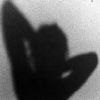 Remixed by Chicks On Speed and Barbara Morgenstern in tribute to the Eighties New Wave group Malaria!, “Kaltes Klares Wasser” gets two quite different interpretations on this 10″. Chicks On Speed’s minimalist Electro drum-machine thumper has the more dancefloor-friendly elements; stark beats turning over themselves in very Eighties style, while the trio add their own new lyrics about the sensual benefits of cold clear water when on Concorde flights or chilling out after the use of the body as a sexual weapon in front of blazing fires. Simultaneously about fun and sexual politics as much as it’s designed for jumping up and down to, the Chicks’ version worms its way into the bit of the brain which sends messages to the feet and also the part which stores catchy hooks for days after first hearing it.
Remixed by Chicks On Speed and Barbara Morgenstern in tribute to the Eighties New Wave group Malaria!, “Kaltes Klares Wasser” gets two quite different interpretations on this 10″. Chicks On Speed’s minimalist Electro drum-machine thumper has the more dancefloor-friendly elements; stark beats turning over themselves in very Eighties style, while the trio add their own new lyrics about the sensual benefits of cold clear water when on Concorde flights or chilling out after the use of the body as a sexual weapon in front of blazing fires. Simultaneously about fun and sexual politics as much as it’s designed for jumping up and down to, the Chicks’ version worms its way into the bit of the brain which sends messages to the feet and also the part which stores catchy hooks for days after first hearing it.
The Barbara Morgenstern interpretation is more in the Nineties remix camp, stretching melodies, trilling the beats and quoting vocals into helium. Easily dynamic, hers is the more langorous take on the song, and more interested in the technical reworking of it into a sonorous, almost smooth, flow of warm beats and precisely-placed, manipulated sound sources.
-Freq1C-
Malaria Vs. Chicks On Speed – Kaltes Klares Wasser
Label: Superstar Format: CDS,12″
 “Kaltes Klares Wasser” was a German early eighties classic by the now defunct all female New Wave band Malaria. Inspired by this and a million other things, including the state of U.S.A. and pink finger nail polish, Chicks on Speed created their own interpretation. And that was only the beginning of the snowball effect.
“Kaltes Klares Wasser” was a German early eighties classic by the now defunct all female New Wave band Malaria. Inspired by this and a million other things, including the state of U.S.A. and pink finger nail polish, Chicks on Speed created their own interpretation. And that was only the beginning of the snowball effect.
On hearing the paranoid Pop rendition the people at Superstar records were unsurprisingly impressed. The end result is an eight track extravaganza of further Electro Pop remixes. In addition to the Chicks on Speed track there are remixes from Wassermann, DJ Koze, and Barbara Morgenstern along with a whole host of others. Some of the mixes are more Eighties than I ever remember the Eighties being, which is good in this case.
-AP-
Maldoror – She
Label: IPECAC Recordings Format: CD
For the unenlightened, Maldoror is a collaboration between Masami Akita (Merzbow) and Mike Patton (Faith No More/Mr. Bungle). Don’t be fooled, though; if you’re looking for “The Real Thing”, you’ve come to the wrong place. She is full of harsh, noisy electronics (of course) and off-the-wall vocals, which complement the music instead of becoming a central focus (if you aren’t paying close attention, it is hard to separate the vocal tracks from the noise tracks).
Patton’s chaotic screams almost become an alternate rhythm, adding to the backdrop of confusion and tension created by ungodly sounds (gotta love those processors). Some notables on this album are “Homunculus” (a sort-of mellow soundscape), “Baby Powder on Peach Fuzz” (ambient-feel building up into harshness), “The White Tears of the Maggot” (production was excellent), “Chiffon Lingerie” (a Techno noise song in the making!!!!!), and “Lullaby” (she who must be obeyed) for its harsh build-up cut off by a harp (this is really disturbing). Where a lot of noise albums fail due to repetition, this album did not – it stayed interesting in its entirety, never becoming annoying or mundane.
-Stacy Denton-
Mandarin – Driftline
Label: Two Ohm Hop Format: CD
 A specific moodiness is immediately apparent on listening to Driftline. Pensive melancholia starts out right away and follows through to the bitter end. There are moments on the CD which could go quite Rock, but never really do which is odd considering it is almost completely dominated with guitar and percussive keyboarding, and highlighted with a beautiful slide weaved in here and there. This sounds comparatively very clean and minimal next to all the Electronica handed to me lately. Unfortunately for Mandarin, it often also sounds uncannily like Slint. Not an out and out copy, and not done worse or better, just like it though. I would love this more if it were more unique.
A specific moodiness is immediately apparent on listening to Driftline. Pensive melancholia starts out right away and follows through to the bitter end. There are moments on the CD which could go quite Rock, but never really do which is odd considering it is almost completely dominated with guitar and percussive keyboarding, and highlighted with a beautiful slide weaved in here and there. This sounds comparatively very clean and minimal next to all the Electronica handed to me lately. Unfortunately for Mandarin, it often also sounds uncannily like Slint. Not an out and out copy, and not done worse or better, just like it though. I would love this more if it were more unique.
Still and all, a few dozen listens has given me a good impression finally, and it does become easier to discern the differences. Jason Wortham sifts vocally through some pretty relevant poetics which are soft and strange, a lot of childlike bitterness, disillusion, questioning, introspection; he sounds a bit like a quiet Scott Weilan. I think it is finally this, the voice and the words, which save Mandarin from being Slint clones. The beguiling “Even Ghosts Wear Shadows” with its brain-stick chorus (“…keeping it all inside”) is the stand out, with just the right amount of “can`t get it out of my head” quality to lead perhaps into a bit of pop success. In fact, either I have just listened to Driftline too much, or it all has kind of a rolling head echo, which hovers in a nice way.
There is also one definitive moment, where the arrangement of shift between “Shackteau” and “Pressing Butterflies” escalates with such a lovely booming drama that I keep finding myself surprised, such is the emotive energy of that swirling climax. I think a lot of credit must be given producer and engineer of Driftline, David Willingham, for this and other such instances which do catch and light the listener’s imagination on the album. This is probably a viable addition to collections, especially for lovers of Low, Labradford, Tortoise and the like.
-Lilly Novak-
The Manic Street Preachers – This Is My Truth, Tell Me Yours
Label: Format: CD
READER BEWARE If you hate the Manics, then don’t waste your time reading this, because it’s not going to change your mind. (“Just so” sez the editor who had to read it because it goes with the territory – Ed.)
One of the most eagerly-awaited albums of the year (!? – Ed.[ Who promises to shut up now]) has turned up. and that’s it, no big deal, just another album by a rock band. And that seems to be the problem, has seemed to be the problem since Everything Must Go. The Manics, reminded of their own mortality, have cut back heavily on the Situationism, their self-importance, and (this is what scares the Scary Manics Fans) their attitude. But once the initial hurdle of realising that, yeah, it’s not The Holy Bible has been crossed, what’s left? And if you ask me, what’s left is a fucking corker. OK, so it’s not the Manics like they once were, but, y’know, I’m not me like I once was either. If we applied that criterion to everything, then New Order (even after the gorgeous Lowlife) would have to executed for crimes against Closer – I’m sorry, but that’s just not fair.
Unlike Chumbawumba, the Manics have used their lep into the mainstream to good effect – a Number One single beginning with “The future teaches us to be alone/The present to be afraid and cold”? How is this possible? A song about the Spanish civil War? on Top Of The Bastard Pops? GENIUS! SHEER FUCKING GENIUS! Okay, so Nicky Wire doen’t quite have Richey‘s way with a Burroughs/Levi/Baudrillard bon mot, but, y’know, who the fuck does? (Okay, some of Nicky’s rhymes are downright unforgivable, but lets gloss over them for now, shall we? Oh, alright then “Free Air Miles/One of your smiles.” Are you satisfied? (Bleedin’ horrified – Ed.)
This is so frustratingly close to being a great album. “The Everlasting” kicks things off nicely, an absolutely beautiful stadium ballad (if that’s not a contradiction in terms) – “In the beginning/When we were winning/When our smiles were genuine” – then the aforementioned “If You Tolerate This Then Your Children Will Be Next” (a title Richey would have been proud of), and then – all sorts of stuff. Sitar intros (“Tsunami”) like The Mission used to do, only bolted onto good songs; cheery little ditties (I shit you not) about Winston Churchill‘s pet name for his depression (“Black Dog On My Shoulder”); even a fucking whistling solo (I’m not telling you where that one is, because you’ll avoid the track in question just on principle, and it doesn’t deserve that) – and all this shit works, believe it or not.
Then you’ve got stuff like “Nobody Loved You,” all self-consciously epic and utterly wonderful, “Aaaah” vocals and chugging bass (but some dodgy rhyming), a song which manages to have the most heart-breakingly passionate leads into the chorus EVER, and lets you forgive all manner of lyrical sins in the verses. “SYMM’s” abbreviated title is symptomatic of the song’s failure to really tackle its subject – again and again on this album, we have either great lyrics backed by MOR, or toss lyrics over wonderful music – if it had been half the length, it would be album of the decade. It has failings, but it’s still great – not their best, but then….
‘Nuff said.
P.S. – Is it just me, or does the intro to “Ready For Drowning” sound uncomfortably like “Let’s Build A Snowman” from Trey Parker‘s classic movie Cannibal – The Musical? I only ask; this is my job. Pay me for yours. (Anyone with any idea what Deuteronomy is going on about here? Or about the trivia question? Answers on a carrier wave please… – Ed.)
-Deuteronomy 90210-
Man In Space – For Medicinal Use Only
Label: (no label) Format: CD
 Anyone familiar with the first Man In Space album How To Potty Train A Supernova will be prepared for the aural onslaught which For Medicinal Use Only lets rip – everyone else will just have to familiarise themselves at their leisure with some of the most out-there psychedelic Space Rock since Hawkwind last played (whenever that was). In fact, so much like Hawkwind is the track “Man In Space” itself that casual listeners would be forgiven for thinking that is was them in their late Seventies heyday, complete with Jan Geerts‘ lyrics which combine the declamatory style of Robert Calvert with Dave Brock‘s windswept lysergic delivery, culminating in a simply massive chorus repeating “Asimov Heinlein Niven Aldiss” as if the end of the world and the beginning of a new one was at hand. “Bombdreaming” does its best to transform the basics of Calvert’s “Ejection” into a shouty trip through the aether, spinning out in its own right in a flurry of keyboards and some restrained feedback. Add in two valiant rhythmic cohorts in the shape of Dave Baeten on bass and Christoph Bosmans on drums and the Man In Space sound is fuller than ever, allowing for some serious head-down boogie action.
Anyone familiar with the first Man In Space album How To Potty Train A Supernova will be prepared for the aural onslaught which For Medicinal Use Only lets rip – everyone else will just have to familiarise themselves at their leisure with some of the most out-there psychedelic Space Rock since Hawkwind last played (whenever that was). In fact, so much like Hawkwind is the track “Man In Space” itself that casual listeners would be forgiven for thinking that is was them in their late Seventies heyday, complete with Jan Geerts‘ lyrics which combine the declamatory style of Robert Calvert with Dave Brock‘s windswept lysergic delivery, culminating in a simply massive chorus repeating “Asimov Heinlein Niven Aldiss” as if the end of the world and the beginning of a new one was at hand. “Bombdreaming” does its best to transform the basics of Calvert’s “Ejection” into a shouty trip through the aether, spinning out in its own right in a flurry of keyboards and some restrained feedback. Add in two valiant rhythmic cohorts in the shape of Dave Baeten on bass and Christoph Bosmans on drums and the Man In Space sound is fuller than ever, allowing for some serious head-down boogie action.
However, in case anyone was beginning to labour under the misapprehension that Man In Space are either a) simeple copyists or b) one trick ponies, “Robot Rock” drags in the inevitable Kraftwerk comparisons, but the results are somewhat broader and deeper, featuring some highly effective lyrics from Lief van Mechelen among the analogue squirls, vocoded chorus and machine beats in a nifty slice of Synth Pop, and there’s more relaxed wibblings on the major chord psychedelia of “Le Peuple de Soleil”. Just as the humming Middle Eastern “Dance of The 3-Legged Snake” looks like it’ll be another Astounding Sounds, Amazing Music ethno-forgery, it’ll kick off into furious phased guitar riffing and pounding drumkits while still keeping on course on human and synthetic handclaps; “Vortex Valentino” does similar things with another monster riff which suddenly Funks out in bleepy Electro style, fading out into dissolution as Geerts leaves the audience to their own devices while he keeps on into the far distance; “Where Is Bussard When You Need Him” brings a Disco element to the choppy riffology, with Geerts making the chickawacka guitar and sinuous bass propel the whole into a furiously dynamic, bulbous groove which positively soars into an ecstaticly optimistic transgalactic opera: and these are only examples.
Throughout the references can be found quite easily to thirty years or more of Proggish/Electronic/Psychedelic music, but brewed up with such love and conviction that the usual response is to lean back and coast on the sheer enthusiastic way in which Geerts and collaborators produce such energetic songs with a smile. “Disobeying The Galaxy” is a fine example of this, built on an explosive series of variations surrounding a phenomenally catchy riff while the vocoded title hints at the same territory as Trans Am have been re-exploring, only with the Rockout pedal pushed all the way through the floor in almost literally breathtaking style. The Metal tang of “Borg” hints at King Crimson too, but once again it’s worth emphasising that the sum of the parts is really quite something in and of itself. By the time therelatively gentle comedown fade out of title track closes the album, the listener should be feeling almost exactly like they’ve been taken on a hyperdelic joyride across time and space – anyone doing so on psychoactive drugs will probably also be easily convinced that they’ve been to virtual recreations of The Roundhouse circa 1969, the Isle Of Wight and every single Stonehenge free festival condensed into one particularly good freak out along the way.
-Tango-Mango-
Man In Space – How To Potty Train A Supernova
Label: Format: CD
 From the farthest reaches of distant galaxies, or perhaps Belgium, arise Man in Space. Jan Geerts‘ excellent Space Rock project. Geerts, previously of the Far Out Band, has here produced an exemplary vision of wide screen cosmic epic. Not for him are the mumbing incoherent artscapes of so much of the Anglo-American Space Rock of the last few years. Bright, primary coloured synth trails, big brazen guitar riffing, complex song structures and outlandish studio trickery combine to make this debut a bold expression of what space music might become in the new millenium.
From the farthest reaches of distant galaxies, or perhaps Belgium, arise Man in Space. Jan Geerts‘ excellent Space Rock project. Geerts, previously of the Far Out Band, has here produced an exemplary vision of wide screen cosmic epic. Not for him are the mumbing incoherent artscapes of so much of the Anglo-American Space Rock of the last few years. Bright, primary coloured synth trails, big brazen guitar riffing, complex song structures and outlandish studio trickery combine to make this debut a bold expression of what space music might become in the new millenium.
But enough generalisations; down to the nitty gritty. The album starts with a great big riff monster “Bright Purple Spacecraft”. It would be perverse not to mention Hawkwind in relation to this track so here we go: Man in Space tear into a huge phased guitar chunk of what everyone wishes Hawkwind would spend more time doing. But it’s also a great catchy Pop tune and hilariously funny. A lesser man would have steered clear of the blatant phallic imagery of the title but Geerts is no lesser man – his fluent superhuman bass lines draw comparisons with a superfit Ian Kilminster. Before we can catch our breath we’re straight into another stonker: “Technophobe” is a tale of spurned love with Cyberpunk imagery. There’s another one of those big riffs that wouldn’t sound out of place in a full on Metal band but then out of nowhere this beautiful melodic middle section emerges. Bass drifting in a wine gold sea of synthesiser and then we’re off again! “Die Zeitmachine” sounds less like Kraftwerk than one might imagine from the Vocodered vocal line. There’s some interesting instrumentation – a vibraphone break and some tortuous twists and turns to the melodic logic of the piece. Geerts never lets up with the inventive composition. If it isn’t composition – well, then he’s a highly intuitive improviser. After the rifftastic extremes of the first three the arabesque Spanish guitar strumming of “Liason Extraterrestres” comes as something of a surprise. Whistling airs catch in the resonant filters of the electronics and we are travelling at extreme velocities into a parallel universe. Perhaps into “Thanosphere”? Here the Steve Hillage-ish delay guitar canters all Ozrics-like until another of those big fists of riff send it into overdrive. But unlike either of the aforementioned artists Man In Space deliver on the gutsy Rock level.
If there is a weakness in Geerts’ production it is in the mixing of his vocal parts. Sometimes they feel as if they have been put a little low in the mix. Whether this is through lack of confidence or whether it is to make them more part of the music it is bit of a shame. He has a good voice and there are interesting ideas in the lyrics. As is proved in the next track “One Deep Breath”, a Larry Niven-esque tale of a lost Cosmonaut who realises that he shall have to leap out of his spacesuit and into the void in order to be saved. Geert’s hard-SF inclinations come to the fore here. The track works on at least two levels: Firstly, musically – of this there is no question. But also as a radio-theatre production. The hints of the spaceman’s amnesiac mind and his external voice are touched in with just the right degree of subtlety. And yes, there’s a huge cosmic guitar bit at the end!
The track “You Broke My Heart, So I Smashed Your Tricorder” is the only track on the album to feature the three-piece Man In Space improvising band. It’s a great piece of trip-out jazz and a shame we don’t hear more of the group on here. Hopefully that will happen on future projects. The track is divided between the opening hallucinogenic harmelodic explorations and a freak out noise fest that begins with the yell of the title: A moment to be savoured! But the next track “Lucifer’s Night on the Town” is perhaps the greatest moment on the album. Stylistically it is a homogenous mix of disco, Star Wars cantina Jazz, Psychedelia and a touch of Soft Cell-like sleaze Pop. It’s a great song and suggests the diversity of Geerts’ songwriting talent and possible directions that the band could launch into if they were so inclined.
After all that is it possible to believe that there is still another great stand out track on the album? “Liberator”, inspired by the TV series Blake’s Seven mixes in equal parts BBC Radiophonic electronics with a classic Metal stomp. What surprises about this record is how many distinct and identifiably catchy moments are contained within its sleek vacuum-sealed exterior. We leave their universe via a squelch of particle accelerating synthesis. A great album.
-Iotar-
Christian Marclay & Otomo Yoshihide – Moving Parts
Label: Asphodel Format: CD
 The crackling joins a cross-section of string sections – and the ticking of a watch meets brother sound in winding of a toy. Is a mark of the modern age, this new concentration on sound collage – a shortened attention span, irreverence married with love of the past, a turning back the clock while ever-prognosticating. A measured beat now, plunged from the gullet of the record you’d never heard.
The crackling joins a cross-section of string sections – and the ticking of a watch meets brother sound in winding of a toy. Is a mark of the modern age, this new concentration on sound collage – a shortened attention span, irreverence married with love of the past, a turning back the clock while ever-prognosticating. A measured beat now, plunged from the gullet of the record you’d never heard.
Mordant chittering is transmitted and what do the records look like after they are through being collated and collaged – collagen? There is the sense (beyond marimbas, beyond mbiras) that catalcylsm and apocalypse have been sneaked in, surreptitiously repetitious and subliminal in excelsis. Piano mixes piannissimo with my dripping tap and why wasn’t I thanked in the liner notes? It is faintly easy to divine which sounds are from Mr. Marclay and which sounds are from Mr. Yoshihide – but is identification the crux of a problem here again? Is the desire – overriding, overwhelming – to concentrate on the parts, and not the movement thereof?
Now back to the orchestra, clicks and cracks downing and drowning the singers, a.o.. And the chime of the clock bell after all that – very funny. The running theme seems to be time itself – exploring the records of the past (classically so) and the million-dollar subconscious question to all this may be “Will I be remembered and what for?” Now comes the scent of water and the start of motors. It would be interesting to try these pieces out on children, just to get a different perspective on the distortion. Horns traipse through the radio waves, tripping over each other on their way to see what the next piece of the cavalcade will bring.
A voice from the past slyphs past – profound and slowly sinking into a sea of parts, from ignorance to bliss…
-David Cotner-
Marilyn Manson – Mechanical Animals
Label: Nothing/Interscope Format: CD
Self-styled Antichrist Superstar, unit-shifting, MTV-friendly star of stage, screen and chat-show circuit and part-time bloke called Brian, the boy Manson has undergone a radical change of image (and style) since his last comedy Goth-Metal opus. Any pretence at being a post-Inductrial Black Sabbath or a Satanist Nine Inch Nails has been dropped in favour of a new pretence at being Bowie. Specifically at being Bowie in the Seventies – just flick through all the alternate covers that never made it onto Diamond Dogs, and ask yourself if the androgynous silver dude on the cover here wouldn’t look quite comfortable on any of them.
A quick peek inside the cover does, however, evoke memories of Eighties Futurists Sigue Sigue Sputnik – and we all know what happened to them; or more to the point, we don’t – but a listen to the music (see, I do sometimes get to the point) shows much more attention has actually been paid to tunes and songs and stuff this time round. Mechanical Animals is painted on a much broader canvas than the menacing bit/loud bit/menacing bit/loud bit/ballad at the end Etch-a-Sketch of Antichrist Superstar, with Glam stomp-alongs (“The Dope Show”), huge soul endings (“I Don’t Like The Drugs [But The Drugs Like Me]”), Wall-era Floydesque ballads (“The Speed Of Pain” – think “Comfortably Numb” re-orchestrated for the chains and rubber crowd) and, of course, menacing bit/loud bit songs like the ones before – only this time with a few more tunes (“Posthuman”).
Lyrically, Manson also appears to have moved on – he’s no longer in Hell, ladies and gentlemen, he’s floating in space, only he’s taken his knack for shout-along one-liners with him: “God is just a statistic;” “God is in the TV;” “You were Phenobarbiedoll;” “She says – I’m not in love, but I’m gonna fuck you till somebody better comes along.” Now he’s actually started paying as much attention to content as style, Bri’s managed to turn out an album far better than it has any right to be. Okay, I admit it – I liked the others, but I’d be the first to admit that musically, while they may not have actually sucked, they were a little one-dimensional. So, it’s a bit like Diamond Dogs then. Only one louder.
-Deuteronomy 90210-
Lasse Marhaug – The Shape Of Rock To Come
Label: Smalltown Supersound Format: CD
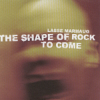 There are plenty of examples around at the moment of Jazz and electronic music being successfully blended. Almost anything that is released by the Thirsty Ear label and Evan Parker‘s continuing explorations in electro acoustic territory come immediately to mind. But Lasse Marhaug takes the marriage to another level where some will undoubtedly question whether his work is genre-defying or genre-destructive.
There are plenty of examples around at the moment of Jazz and electronic music being successfully blended. Almost anything that is released by the Thirsty Ear label and Evan Parker‘s continuing explorations in electro acoustic territory come immediately to mind. But Lasse Marhaug takes the marriage to another level where some will undoubtedly question whether his work is genre-defying or genre-destructive.
He has worked with Free Jazz players like Paal Nilssen-Love and Mats Gustafsson as well as being a member of Jazzkammer, and the title of this new release may be read as homage to Ornette Coleman‘s The Shape OF Jazz To Come. So the Jazz connections are there, even if they are somewhat tenuous. What I think Marhaug is doing is more concerned with the spirit and energies of certain types of Free Jazz. It is confrontational and defiant. If there are structures involved they are far from traditional. Anyone familiar with his fellow Norwegians, Supersilent, will recognise a similar territory where walls of sound are created and an extreme music produced, relying on improvisation, chance and sheer visceral impact.
The opener, “Sleeper”, begins with a regular pulse then gradually develops into a maelstrom of layered sounds that draw on his use of computer and electronics. He constructs a collision of fairly brutal musics that owes something to the sonic assault perpetrated by Peter Brotzmann‘s 1968 milestone Machine Gun. Only the weapons have altered as the development of technology has given artists like Marhaug the opportunity to attack the senses without the need for an ensemble. “Magmadiver” continues in a similar vein with a more melancholic section allowing the listener a few moments of recovery before “All In Good Spirits” begins its hissing, bristling confrontation which manages to include some vicious percussive effects towards the end. The cd ends with some heavily distorted guitar on “It Is My Kind Of Top” and this, mixed with caustic electronic interventions, is not aimed at the faint hearted.
The title may be somewhat misleading rather than prophetic. I don’t expect there will be an army of defectors from the rock camp. What the album amounts to then is an intense sonic experience in the way that late Coltrane could be, Cecil Taylor still is, or a band operating just outside the genre, like Faust, can be. That, of course, is the appeal. It’s often savage, sometimes unpredictable but equally compelling.
-Paul Donnelly-
Marineville – Redpath House
Label: Universal Egg Format: CD
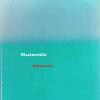 Ambient Drum and Bass on a revolutionary bent, swimming with melodies melding into tranced-out keening vocals from Marnie Cameron, pipes, trails of echo and the like, Marineville‘s debut album for Universal Egg nestles right into the label’s warmly loving arms. Two of the tracks were recorded live outside the studio which gives the album its title where the other pieces were also played direct, but this actually makes little discernable difference to the listening of this CD, as the whole ebbs and flows with tidal regularity into moods and textures of analogue squirls and bleeps from the bassy miasma.
Ambient Drum and Bass on a revolutionary bent, swimming with melodies melding into tranced-out keening vocals from Marnie Cameron, pipes, trails of echo and the like, Marineville‘s debut album for Universal Egg nestles right into the label’s warmly loving arms. Two of the tracks were recorded live outside the studio which gives the album its title where the other pieces were also played direct, but this actually makes little discernable difference to the listening of this CD, as the whole ebbs and flows with tidal regularity into moods and textures of analogue squirls and bleeps from the bassy miasma.
There are few surface-level surprises to this album, but deeper down in the floatation tank, ears might find more subjective travelogues developing in the curlicues of an echo box or the wash of phaser hiss. Rhythms emerge to the gentle stabs of electric piano, Easy style. One track is called “Psychedelic Music”, and is about right in its naming as the head coasts along from The Orb‘s space-station via reversed samplescape to “Trip To Marineville” splashdown. Another is “The Freaky Stuff”, where more urgency makes the whirls curl and the arms lift of their own accord at the point on the album where listeners lulled into drifting contemplation of the turn of a VCO get shaken awake into a rush of slurping rhythms, murky voices and the apprehension that all is not as sleekly fulffy as might be casually assumed.
Redpath House is a generous dollop of Ambient liquidity, expansive synthesis and breakbeats of commendable restraint, seemingly made by heads for heads to experience in-depth rather than passively chill out to on the bean bag with a bong. Though no doubt it would do just as well for that setting too…
-Freq1C-
Marineville – Redpath House (A Second Opinion)
And breathing on the compact disc revealed secreted patterns, that, like feeble and vague critique, vanish into the oblique just as quickly.
Some film noir horns, and then the sizzling electronics. Vibes, man. And woman, calling from the shimmering plastic. “The revolution…” – and so on, and soon. Drum and bass – in all their ethnic acid and varieties – fall heavily but not clumsily. Videogame: optional. Varying levels of calm seep from the blue-and-green of the cover to the charm of the record and versa-vice. The pending, pensive stir of universe kicks up cosmic dust amid the kosmische. An indistinct voice orbits their 8th planet, heralding a wowie dawn and a mystery rumble…
-David Cotner-
Marmoset – Record In Red
Label: Secretly Canadian Format: CD
 Marmoset is one of those bands that Rock critics everywhere will claim/are claiming excitedly (and repeatedly) as their own discovery, just because they’re so amazing that they’re just doomed to be considered important and seminal and classic twenty years from now. Of course, that’s ridiculous, because despite their nonexistent commercial radio play and exclusion from the Grammy’s, cool people like Jonathan Richman still ask them to open for him, and really, can anybody or anything really be discovered? And what is self-discovery, exactly? These things bother me this morning.
Marmoset is one of those bands that Rock critics everywhere will claim/are claiming excitedly (and repeatedly) as their own discovery, just because they’re so amazing that they’re just doomed to be considered important and seminal and classic twenty years from now. Of course, that’s ridiculous, because despite their nonexistent commercial radio play and exclusion from the Grammy’s, cool people like Jonathan Richman still ask them to open for him, and really, can anybody or anything really be discovered? And what is self-discovery, exactly? These things bother me this morning.
Anyway, Marmoset themselves are just a wonderful band. They occupy multiple places on the musical spectrum, with a retro sound like Johnny Thunders and the sleazy cool early Stones stuff on one hand, and something spacey and cool and echoey and futuristic on the other which takes their otherwise retro sound and pushes it beyond being just that. Lyrically, the songs find a place between abstract children’s songs and Burlesque music for really bad girls and low budget drag queens, like Lewis Carroll staggering through an acid trip, or maybe just how he’d normally sound if he had fronted a band. Musically, the guitars are so crisp and so beautiful, the vocals are perfect, and the bass lines are just plain haunted.
-Holly Day-
Maurizio Martusciello – Unsettled Line
Label: Metamkine Format: CD
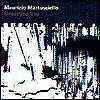 These small CDs seem to start out in just that way – one small sound, cast into the oceans. The attendant ripples – mainly, whatever they collide with – are the bringers of sound in a similar way. A chitinous chatter and skip escapes, flies on velveting water; a catalogue of insects transformed into sound. One by one. Phylum and genus. Class? Of course – it’s French. A shard of glass flutters from speaker to speaker, into the water, kicking up another swarm of tones. And here a child’s laugh, there a scupper of wings – from somewhere, going straight back. Bells and itchy snippets, children and marbles. Could the “unsettled line” be that of youth?
These small CDs seem to start out in just that way – one small sound, cast into the oceans. The attendant ripples – mainly, whatever they collide with – are the bringers of sound in a similar way. A chitinous chatter and skip escapes, flies on velveting water; a catalogue of insects transformed into sound. One by one. Phylum and genus. Class? Of course – it’s French. A shard of glass flutters from speaker to speaker, into the water, kicking up another swarm of tones. And here a child’s laugh, there a scupper of wings – from somewhere, going straight back. Bells and itchy snippets, children and marbles. Could the “unsettled line” be that of youth?
A crunch of media and a swirl of flies – preceding more children’s laughter. Could the tones be prefaces – a way to remember? Sound-associations? Or was it all just a joke?
-David Cotner-
Massimo – Hey Babe, Let Me See Your USB And I’ll Show You My Firewire
Label: Mego Format: 3″ CDS
 Somehow there’s an affinity with Anal Cunt‘s queercore geek-burst “Technology’s Gay” and Massimo‘s nerd-baiting Hey Babe, Let Me See Your USB And I’ll Show You My Firewire; perhaps it’s something to do with the gleeful blasts of noise cutting across the sleek futurism of the namechecked I/O ports de jour. The cut and paste Techno-porn imagery on the sleeve probably has a similar point too – putting the hard into hardware and revelling in the blatant sexualization of fetishized computer gear as the Firewire port becomes a proffered anus and the USB cable a radiant male member.
Somehow there’s an affinity with Anal Cunt‘s queercore geek-burst “Technology’s Gay” and Massimo‘s nerd-baiting Hey Babe, Let Me See Your USB And I’ll Show You My Firewire; perhaps it’s something to do with the gleeful blasts of noise cutting across the sleek futurism of the namechecked I/O ports de jour. The cut and paste Techno-porn imagery on the sleeve probably has a similar point too – putting the hard into hardware and revelling in the blatant sexualization of fetishized computer gear as the Firewire port becomes a proffered anus and the USB cable a radiant male member.
The music? Well, itr’s entirely sourced from one trumpet, then rammed through whatever software Massimiliano Sapienza has on his PC, no doubt through some of those interface standards, with the results squeezed out in a clangour of defibrillating noise of someh\what extreme volume. Still, Massimo’s recording technique with the resulting splurge, crunch and crackle of displaced sounds lets him boost the volume levels to maximum pain levels, even on the quieter moments of bleepy digital gunge arrangement. The thrums, snickers and ear-rending tears which make up tracks with titles of dubious lyricial descriptiveness as “She Male 808”, “Low Goats” and “Microsound And Glitch And Cuts Can Only Lick My Mafia Ass!” exhibit plenty of dynamism, and for long enough to maintain interest in the visceral journey through excoriated sound which results.
-Freq1C-
Masstishaddhu – Shekinah
Label: Psychedelic Pig Format: CD
 Stringed drone and measured organ pulsebeat. Much chanting, and the rhythm wends like the devouring dog on the cover. Circular and passionate and WAIT STOP THE POETRY! This came out 12 years ago? On United Dairies? That’s just great, wonderful, fine – WELL, HELLO MISTER FANCY PANTS. This quite frankly is an intensely beautiful recording but hey Stapleton! Can we mellow out with this limited edition crap? If you (and Dick Rupenus from The New Blockaders, who purportedly is behind Masstishaddu) think this is such hot shit, how come we have to go through TWO limited editions to hear it? Blink and it’s gone. I know “fair” is a fool’s notion, but can we just lighten up a little and let more people hear what’s lovin’ in yr oven?
Stringed drone and measured organ pulsebeat. Much chanting, and the rhythm wends like the devouring dog on the cover. Circular and passionate and WAIT STOP THE POETRY! This came out 12 years ago? On United Dairies? That’s just great, wonderful, fine – WELL, HELLO MISTER FANCY PANTS. This quite frankly is an intensely beautiful recording but hey Stapleton! Can we mellow out with this limited edition crap? If you (and Dick Rupenus from The New Blockaders, who purportedly is behind Masstishaddu) think this is such hot shit, how come we have to go through TWO limited editions to hear it? Blink and it’s gone. I know “fair” is a fool’s notion, but can we just lighten up a little and let more people hear what’s lovin’ in yr oven?
Don’t get me wrong – I’m checking my ripcord before I skydive but this rocks socks. These sounds are down like a DC-fuckin’-9.
-David Cotner-
Matching Mole – Smoke Signals
Label: Cuneiform Format: CD
 I don’t suppose Robert Wyatt will greet the release of a ‘live’ Matching Mole album with any great enthusiasm since he tends to view his work prior to 1974 as ‘too adolescent’. And, to be honest, I wondered what this would sound like after so long. The comments of the band in the liner notes don’t do much to dispel any doubts either : “some of the performances were a bit self-indulgent looking back” and “we were, for a time, extremely ill-disciplined on stage”. So says bassist, Bill MacCormick. But this was 1972 so they were not alone.
I don’t suppose Robert Wyatt will greet the release of a ‘live’ Matching Mole album with any great enthusiasm since he tends to view his work prior to 1974 as ‘too adolescent’. And, to be honest, I wondered what this would sound like after so long. The comments of the band in the liner notes don’t do much to dispel any doubts either : “some of the performances were a bit self-indulgent looking back” and “we were, for a time, extremely ill-disciplined on stage”. So says bassist, Bill MacCormick. But this was 1972 so they were not alone.
In fact there are moments when “something magical happened” as he also says in the notes. The blistering power of the opener, “March Ides 1”, pins you back as Wyatt and the bassist drive the band beneath Phil Miller‘s harsh guitar solo. “Smoke Rings” begins as a looser, gentler piece that builds with the bass up front and more of Miller’s trademark blowing. It’s a piece that falls between indulgence and attempts to retain a shape, leading into Miller’s monster riff, “Nan True’s Hole”, a piece also given an airing by Hatfield and The North to good effect as “Oh Len’s Nature”. I always thought that Dave McRae was a somewhat under-rated pianist, like Steve Miller perhaps, and it’s worth listening to his often restrained contributions which bring a range of colours and textures to the pieces like “March Ides 11” or “Brandy As In Benj”. On the former he produces sounds that range closer to fuzz organ and guitar than electric piano. He is also the composer of six of the tunes.
Wyatt may feel embarrassed by his vocal contribution on “Instant Pussy”, which is short, electronically shredded and of its time. Such indulgence can be excused since we’re given the opportunity to hear his unique drumming. They may have felt that they lacked discipline but the tracks are not that long, though I don’t know how much editing has been done. Miller’s “Lything & Gracing” is the longest, clocking in at over ten minutes but compared to other Jazz-Rock outfits that sounds fairly restrained. Although it starts with his lightly clipped chords it misses the agile soloing of the Hatfield version and relies rather too much on those repeated chords. MacCormick’s playing is reminiscent of Kev Hopper in places and Wyatt is ubiquitous yet unobtrusive behind and among them all. No mean feat.
For a band that only lasted a year and came into being more by accident than design, Matching Mole do have a definite identity and a place in the Canterbury constellation. This set taken from various gigs around Europe shows a band that were forging a sound that, had they lasted longer, might have developed that identity further. As it is they offer a link between Wyatt’s last work with The Soft Machine, especially ‘live’, and Hatfield and The North . Nothing to be embarrassed about.
-Paul Donnelly-
Stephan Mathieu & Ekkehard Ehlers – Brombron 02: Heroin
Label: Staalplaat Format: CD
 Another deluxe package from Staalplaat, with a scheme behind it: put two artists in residence at the Extrapool project in Nijmegen with a studio to hand and let them collaborate. Here Stephan Mathieu (AKA Full Swing) and Auch alter-ego Ekkehard Ehlers get down into unwinding the nitty-gritty of sound, warping glitch and crackles into a slowly-spiralling series of compositions. As for the packaging, it’s made from intricately-folded paper and card with a rough, grainy texture to match the acoustic contents, and holds a little quote from John Lennon inside – “I always liked simple Rock music” to provide a further elliptical hint.
Another deluxe package from Staalplaat, with a scheme behind it: put two artists in residence at the Extrapool project in Nijmegen with a studio to hand and let them collaborate. Here Stephan Mathieu (AKA Full Swing) and Auch alter-ego Ekkehard Ehlers get down into unwinding the nitty-gritty of sound, warping glitch and crackles into a slowly-spiralling series of compositions. As for the packaging, it’s made from intricately-folded paper and card with a rough, grainy texture to match the acoustic contents, and holds a little quote from John Lennon inside – “I always liked simple Rock music” to provide a further elliptical hint.
Now apparently the album is entitled Heroin as it’s basically derived from Pop music, and that’s what all the big stars do. Whether or not that particular drug induces acoustic sensations of some of the laptop and “real” instrument compositions on this disc is entirely best left to surmise, but it’s amusing to note that one track of extrapolated snuffling and analogue surface noise with emergent cotton wool guitar is titled “Supertramp”. This sounds nothing much like that particularly over the top group whose record is used as a textural and melodic sample source, and is perhaps as close to the Velvet Underground as is to be found on Heroin, building up to a warm mushy cloud of hiss and idly-strummed guitar. Elsewhere, the two “Rauch” tracks shimmer with reverb, and the opening and closing “New Years Eve” pieces feature fireworks and some sweepingly meditative organ twirls courtesy of Katja Mathieu as one century crackles into another.
Perhaps after all that title is quite apposite: “Heroique” and the two “Blue Baby” pieces have an opiated hush like the sound of blood rustling in the ears in close-up, drifting through stasis with a sense of blissed-out yet flat calm. Tranquillised and painless, like the strains of Bach‘s “Air On A G String” rising through a dense fog of dissipated echoes in “Vinnies Theme”, with a feeling of drowning in close air. Likewise, “Joshua’s Theme” trips ponderously on the vinyl click and thrum of electonic treatments, at once demanding concentration on the sound and past caring if it’s being listened to at all.
-Linus Tossio-
Mati:K – Mati:K
Label: Sub Rosa Format: CD
 Piano strains wring out the hectic trout-flipping of the modern beat – the rapidly-beating wings of the insect are brought into vision, along with the automatic chkchkchk of a sprinkler system. Not that these are perjoratives – no, these are hints! And wherefore art thou, Human Beat Box? Actually, I had heard he had died. What would he think of these newfound outcroppings of style?
Piano strains wring out the hectic trout-flipping of the modern beat – the rapidly-beating wings of the insect are brought into vision, along with the automatic chkchkchk of a sprinkler system. Not that these are perjoratives – no, these are hints! And wherefore art thou, Human Beat Box? Actually, I had heard he had died. What would he think of these newfound outcroppings of style?
Tiny melodies are repeated constantly, beats are thrown and caressed; gunshots and bells, watery shells – and what a daunting task it must be, to put these sounds together. One must have an extraordinarily clear vision of what is desired – because with these sounds there are so many choices when it comes to creating them. And, of course, another question rears up – how much is enough? What part does “necessity” play in the making of electronic music?
Of course, this recording makes for quite agreeable fuck music – and here again a question, and that of levels? How loud the sound during coital affirmation? Nodding of head and flashing back to 1990 is had; but it suddenly dealesces into a light snowfall of clicks and pops, then Jazz interludes of bass and drum, flashing back to an earlier time.
-David Cotner-
Kaffe Matthews – Cecile
Label: Annetteworks Format: CD
The crackle and pop of what seems to be vinyl – snaps “to.” Rhythms of it. Very nice Kunstkopf effect cadges its way in – moving from ear to ear, like a smile. The edges of the vinyl experience seem to be the focus – the grooves, man. And now, another presence – something similar yet simultaneously other. As lightning passing through storms of static, this music comes – tumbling and shivering through itself. Carved into dopplered waves of sound. The sound should fill a great hall and then there is confusion – the mark of a rather fine recording – “what was that?” Cf. Did I hear something outside of this, in the “real” world – a noise, a commotion? How often does this happen – that the sound melds with the environment – and how great is that?
Chattering loops to the fore, now. Is the repetition of the loop meant to highlight certain sounds – precluding others? Including others? Does looped music act as a sort of aural Rohrschach test, picking the brain for impressions and details? The sounds shudder to a point, then another set of loops vaults slowly to the forefront. There is some attention to the space between – where sounds from the outside world (i.e. conversation, passionate cries, a telephone) could interject. Is this planned? Sounds follow similar patterns, others fall out of phase – squeak, speak, creak. And the whirr and tumble of what seems to be machinery – plugs along. There’s a lull (slight return) and a more manic presence in the treble. Full stop.
The sounds come stealthily in, their presence made known like the travel of a faraway locomotive, breathing wind. And the seaside beckons – how the hiss of a tape sounds like a breaking wave, and Kaffe, my dear, we are on the same wavelength! Ah, well, just another drinking at thee psychick well ov. Varying levels of fuzzy static wend their ways off the track, and what to pick from the pans? It’s sound that isn’t necessarily obtrusive or intrusive. The overall effect – packaging, titles, locales – is a that of diary. A love-letter from the road. In a way, it’s as if these sounds came from that special place of memory – and the attempt is in earnest to transmit those memories via the sound.
Electro-thought-phenomena?
-David Cotner-
Mazk – Mazk
Label: Noise Asia / Sonic Factory Format: CD
“Material recorded live at Pezner Club in Lyon, France on September 17, 1999. Re-edited and mastered at Bunker 301 Studio in Tokyo, Japan, in May 2000.”
Warped static crackles undulate over the steady rhythm of a faraway metal. This record is released on PNF‘s label in Hong Kong (PNF, the duo of Dickson Dee and Li Chin Sung, were featured previously on Turntable Solos, released on Sachiko M‘s Amoebic Records). Zbigniew Karkowski and Masami Akita have this unique relationship that has defined enough demarcations as to vividly illustrate each of their respective voices and outlooks when it comes to making loud sound. Many different rhythms shine through the smog of the moment that would make Tinguely tingle and proud… It’s a little like watching a child take to its first drumkit – a few rhythms and beats repeated and repeated until it’s time for that particular child to take a nap. This is headturning, pantshaking sound for sure – a different experience occurs when one turns one’s head to explain to the inquiring mind just what it is that’s being played.
Like cards in the spokes of a speeding bicycle that is constantly on the verge of breakdown, Mazk tunnel into the immediate psyche and lock the brakes, poring over every pebble as it’s picked from the eventual street pizza that is downright lowdown…
-David Cotner-
Meanest Man Contest – Merit
Label: Plug Research Format: CD
I thought that instead of writing a review of this I should just quote from the promo sheet. I mean, look at the opening sentence, Meeting Meanest Man Contest is like shaking hands with a newborn cloud. Not bad. Still, I thought I should try and go one better. Meeting MMC is like walking into a room where a phalanx of shape-shifting turntablists gather in clouds of ether. Not bad either, though I say it myself.
Actually Meanest Man Contest, or Quarterbar (beats) and Eriksolo (vocals), mix up an abstract brew of spliced keyboard colourings and underpin it with a variety of beats. Various tinkling electric pianos come and go while percussive tracks snap and hiss. The vocals, which are not a prominent feature take the form of raps on “Science Diet” and “The Most Intrusive Places” and there are some sampled voices on “I Have Changed My Plans” and “Excitement Of Students”.
They make moderately varied background noises, like a soundtrack for barely lit places where people gather to drink innovative cocktails and discuss modems.
-Paul Donnelly-
Roel Meelkop – 2 (Kyoku)
Label: Staalplaat Format: 3″ CD
These small recordings, their sounds in miniature, live for a while through the speakers, presenting a variety of levels at which they may be listened. And then, the surprise – have you been listening at the “right” levels? They are deceptively miniature. For just when you think the recording is not quite on, WOLLAH!
“Hikari was created as a soundtrack for the installation FLASH by visual artist Shinichi Yanai.” And so it goes – the sounds brighten quickly, flashing through your soundsystem, perhaps causing damage, perhaps not. They’re faintly reminiscent of a child learning to speak. And like a child’s speech, the sounds rise and fall, heedless of polity or convention, sizzling with their own joy at creation.
POW. In that far-off rifle-range sort of way. The sounds raise like monolith monsters – suddenly, and in challenge. Hinges open and something crackles. And then the sounds drone nito the void, and so on.
-David Cotner-
Radboud Mens – Sine
Label: Staalplaat Format: CDS
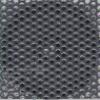 Radboud Mens‘ addition to the growing collection of lovingly-packaged Staalplaat Material releases comes in one of the best jewel-cased works of CD art yet – perforated steel sleeves! A true masterpiece of design, the effect is rounded off by an elegant dark blue semi-transparent CD.
Radboud Mens‘ addition to the growing collection of lovingly-packaged Staalplaat Material releases comes in one of the best jewel-cased works of CD art yet – perforated steel sleeves! A true masterpiece of design, the effect is rounded off by an elegant dark blue semi-transparent CD.
The disc contains five pieces, opening with the clickety-spit and slow-mo bass suffusion of “Funkenkammer”, followed by the equally quiet (until volume is applied to taste) and appositely-titled “Steel”, a track which does its very best to shake the speakers off their resting place and around to the continuing clatter of what could possibly be the afterglow of tap-dancing electronic elves. Somewhere deep down there is the remains of an attenuated Techno beat, but faint indeed. “For D.A.” feels more urgent as the bass groundswell becomes ready for a landslide, then folds away into a minimal area of respite before a return into clicking polyrhythms.
The heartbeat boom and tachygraph plot meander that is “Mol” and the Dub-groove trill’n’bass piece “Metal/Dub/Plate” complete an EP which bridges the gap between Pole and Pan Sonic quite nicely thank you. As people get better and better home sound systems with bigger and broader speakers capable of doling out the sort of bass frequencies found on this record, there may well develop a need for stronger floors and wall joists as part of city planning regulations. If so, Radboud Mens could well be one of those ultimately to blame for bringing the houses down, which would be quite a testament to the tones generated on this CD.
-Antron S. Meister-
Menu | Exit – Profiles
Label: Underscan Format: 12″
Profiles by Menu | Exit is the second offering from Underscan. This is more nicely-wrought dark Electro. In general, the EP is delicately corrupted; the track “Human Randomize” almost reaches Drum and Bass, or maybe that should be the other way around. Behind the fuzz and the noise the rhythm has an undeniable hint of breakbeat at work. At other points Menu Exit provide Electro to the nth degree. “Timeclock” is steeped in awkward synth portamento settings, while “Set Locator”, my personal fave, is a wonderful mix of analogue bubbles, glitch-driven rhythm, and delicate melodic structures. All in all Menu | Exit and their record label Underscan are worth looking out for.
-ap-
Robert Merdzo – Not A Question Of Balance
Label: Disko B Format: 2CD
Not only a collaborator with various producers on a Wales/Bavaria/Catalonia axis, but also member of Hardcore band Mass, Robert Merdzo is also seem to be a bit of a musical magpie, dipping into various genres (and who doesn’t these days?) for source material, ideas and a few lifted manouvres. With two hours plus of material as the result, he’s come up with some fine oddities among some unsurprising longeurs. In fact, judging by the sleeve notes as well as the music, Merdzo is on a mission to cut and paste and mix and mash his way around Europe and beyond.
Hardly a beat gets past him without getting reversed, slowed down or compressed before being layered with tinkling meanders, strangulated vocals rambling in the inconsequential arms of ennui or sound effects straight out of the BBC school of warfare and atmospherics – as found on the ironic bugles and funky march breaks of “Target”, which is about as stoned a reaction to militarism as is possible, or the thunder and rain he deploys later on. In fact the first CD starts out (and remains) a relaxed, even shambolic affair, showing little concern for the usual niceties of Electronica as currently established, preferring to chug along on the back of an echoing loop before bringing the hypnotic drones and cycling beats into play to static, minimal effect as demonstrated on the eighteen minutes “Radios” takes to travel from pulse to only subtly more activity, and back to a different beat entirely, or by the fourteen minutes of estranged, walking-glitch steam-beat schmooze which is “Coombus (The Neptune Project)”.
There are moments which hark back to a Front 242-style Industial Dance era, but again, these get played with and de-Funked, as do the more Electro or Techno moments (some slightly reminiscent of Underworld in a cantankerous, evn surly, mood); just as a groove seems like it’s built up a head of steam, Merdzo redirects it into less obvious combinations of kick, snare and acid analogue synth spray. As for the Garagey-Funk-Disco of “Chill”, not too many people will groove the night away to it, as it’s far too phased, and just a little bit empty. The second disc keeps up the demented, if patchy, assault on the senses (and maybe patience too; perhaps it’s best not to listen to both discs in a row…), and yet another lengthy track (“Watch My Sleep”) of ticking, clicking bare-bones beat accretion takes some endurance; even if it is nicely sparse and surprisingly upbeat by the end. Later there’s another eleven minutes of sub-Moroder-grounded maxi-minimalism in the shape of “Tila,” which still entirely fails to outstay its welcome.
N.A.Q.O.B. is, when it comes down to a final analysis, a very strange record; there’s a moment of almost Ghost-like Folk-Psychedelia in “Slow” which slips out from among the minimal drones and obtuse rhythm programming, for example, which is quite moving (in an attenuated manner), or the pounding environmental piece “Metro” which squiggles and sears its way through a crowd scene, or the hyperactive guitar and drum machine bleats of “Haut”. Puzzling in its lateral outlook; selective in its eclecticism; and bloody long to boot, this record shows the dangers and benefits of two silvery discs’ worth of space to work in – self-indulgence run riot, or (dare it be said) a Progressive expansion unbounded by the normal framework of the single album format? A bit of both, and just about worth it on both counts too.
-Freq1C-
Merzbow – Coma Berenices
Label: Vivo Format: CD
 This three-hundred-and-somethingth release from noise magician Masami Akita is packaged in sombre black and themed against animal cruelty – albeit in a loose sense that has nothing to do with the music, unless perhaps the listener’s suffering is an allegory for that of the animals. But perhaps not.
This three-hundred-and-somethingth release from noise magician Masami Akita is packaged in sombre black and themed against animal cruelty – albeit in a loose sense that has nothing to do with the music, unless perhaps the listener’s suffering is an allegory for that of the animals. But perhaps not.
Eleven minute opener “Earth Worms” is a gross caricature of a guitar solo, all soaring harmonics, feedback and wah-wah effects. One wonders if this is what Jimi Hendrix sounded like to grown-ups in the 1960s. “Dark Stars” is more overtly electronic, a pandaemonium of oscillators and resonant filters backed my an intermittent bass thrum that provides the only hint of order and repetition. At eight minutes this is the shortest and most hectic of the five pieces here. “Alishan” brings the first real melody and structure, a ponderous stoner bassline that wouldn’t sound out of place in a motorik krautrock rhythm section.
“Silk Feather” slows the pace down a little, blending the implicit psychedelia of “Alishan” with the synth twiddling of “Dark Stars” but with a slower, more ominous bass riff and more restraint on the chaos. Something about this track makes me think of Black Sabbath, but maybe that’s just me. Finally, “Revenge on Humanity” heads into more brutal, percussive territory, assaulting the listener with pulses of overdriven synth and grinding noise.
What’s remarkable about Akita is that he can make something so alien and hostile actually quite listenable. The tracks could be a little shorter but then you wouldn’t get such a dislocating sense of unreality when they finish. Occasionally the effect is like getting all the jarring, noisy elements of a rock album but without the actual formulas of rock music. I’ve heard a lot of noise acts over the years but very few of them have the subtlety and lasting appeal of Merzbow.
-Andrew Clegg-
Merzbow – Live At Radio 100
Label: ERS Format: CD
 When Merbow showed up for as session on Amsterdam’s pirate Radio 100, they consisted of the man Masami Akita himself at the decks, and Bara taking turntables and vocals plus the squeaky-unclean Theremin interjections of one Reiko. With Radboud Mens dropping the needle onto some suitably-plundered vinyl too, it’s surprisingly not as noisy as one might first assume.
When Merbow showed up for as session on Amsterdam’s pirate Radio 100, they consisted of the man Masami Akita himself at the decks, and Bara taking turntables and vocals plus the squeaky-unclean Theremin interjections of one Reiko. With Radboud Mens dropping the needle onto some suitably-plundered vinyl too, it’s surprisingly not as noisy as one might first assume.
Which is of course relative – it’s actually incredibly loud and almost ecstatically vibratory on is collision of sounds and hyperspeed crossfades and nauseating rewinds – whatever poor discs suffered to make this CD through Akita and fellow purgatory DJ’s particulr take on the art of the radio mix-meister, they died a horrible death, assuming they didn’t make it through the assault to emerge zombie-like another day to suffer eternal torture in vinyl hell. Tear it up? Rewind selecta? Big shout going out to the bastard noise posse? This sort of stuff makes for dedicated upset, nasty uncool coolness running riot on the airwaves… what the fuck isn’t there more of this spat out for the unwary to mistake for a particularly bad electrical storm on their tuner?
Spluttering, battering, infectious in the absolutely literal sense, Live At Radio 100 has moments of lucidity and quiet amongst all that noise. They’re just as weird in their own way, as scat crooning merges with the sweep of a disc upside the diamond spark and complaint of a flanged turntable moan, once again demonstarting that Merzbow’s “music” is about much more than all-out distortion – it’s a mesmerising trip of dynamics summoned both electronically and by the analogue application of all hands on decks to make an echo-beat rise from scratches and mismatched beats, all for the entertainment of the lucky, lucky souls in the audible radio spectrum. Enjoy.
-Freq1C-
Metgumbnerbone – Ligeliahorn
Label: Sedayne Format: CD
The usual beautiful CDR packaging from Sean Breadin at Sedayne, who consistently packages his releases in a very tasty way that doesn’t leave one (well, me, actually) with the sour impression of “Aw crap, not another CDR – more Xmas tree ornaments again this year for presents”. A reproduction and reworking of the original LP art sprawls across the cover, running through the bones stripped bare by the crows in the insert.
Essentially, this is an artefact in sound in which there’s a lot of blowing of horns and rattlings and rhythmic / arryhthmic banging on metal and other unidentified items on it. Yet consider the fact that all this happened in the northern wastes of England in 1983, when Punk Rock had barely made a dent in those mining towns where (from what I understand) aberrations are not welcomed with careworn and grimy arms.
Mr. Breadin: “Ligeliahorn was recorded during the summer of 1983 at The Ruins of Industry, Elswick, Newcastle-upon-Tyne – long abandoned post-industrial sites along the banks of the River Tyne providing ideal if somewhat hazardous environments for the sort of musical activity Metgumbnerbone is known for – i.e., entirely live on location ceremonial improv / action, in which the location itself determined the musical outcome as much as did the performers or their instruments. The vinyl edition of Ligeliahorn contained four edits from master tapes the location of which are presently unknown. For the CDR, eschewing the usual practice of taking it directly from a surviving vinyl copy presently in my keeping (supposedly unplayed but lots of static etc…), I’ve taken the music from the original cassette demo edited from the masters when we were deciding what to put on the record – a rare piece of archive source material in itself which, for the most part, contains longer edits than which appeared on the album. The exception is the third piece – the beginning of which I’ve taken from the vinyl and edited it snugly into place. The sound quality is good, but not perfect – we’re dealing with highly sensitive & very old source material here, which is all part of its charm.”
What is it that makes someone follow a calling that is difficult, ritualistic and comprehensively occluded from the norm? This recording personifies (because it is that oddly warm) everything about the reasons behind experimental music – why people do it, pursue it, to it. We need more individualistic, impossible spirits like these sounds in the difficulty that is living life today.
-David Cotner-
Mi and L’Au – Mi and L’Au
Label: Young God Format: CD
 Mi and L’au are the latest discovery by Michael Gira, whose Young God label is fast becoming a guarantee of quality. They’re a male/female duo (Finnish and French respectively) who live, apparently, in an isolated cabin in the woods in Finland, where they work on their music. (Muso trivia- “Gentle Soul” by Devendra Banhart is about L’au, so one can only assume he’s a very nice chap).
Mi and L’au are the latest discovery by Michael Gira, whose Young God label is fast becoming a guarantee of quality. They’re a male/female duo (Finnish and French respectively) who live, apparently, in an isolated cabin in the woods in Finland, where they work on their music. (Muso trivia- “Gentle Soul” by Devendra Banhart is about L’au, so one can only assume he’s a very nice chap).
Now it seems to me there’s two ways you can go if you’re making music in a cabin in the woods. Either some kind of righteous redneck gunfuck frenzy, or something more organic and magickal. Mi and L’au have taken the latter route, and their self-titled debut is a wondrously fragile structure, Mi’s plaintive vocal, balanced with L’au’s more strident, though chilled, tones, riding over minimal acoustic tracks, largely guitar with the ghosts of trebly piano, bells and what have you lurking behind, with the occasional burst of birdsong and the like. By turns lovely and sinister, there’s something very… wintry… about this album. In short, it sounds like the kind of thing you’d listen to if you were snug by a fire in a cabin in the middle of the woods in Finland. You can almost hear the snow falling outside- if it’s not too much of a crass national stereotype, you could imagine the Moomins putting this on just before they hibernate for the long Moominvalley winter. Either that, or you could imagine the Moomins already hibernating, and Snufkin wandering about outside with this on his iPod.
It’s quite simply gorgeous. I was already thinking of jacking it all in and going to live in a cabin in the woods anyway – on the strength of this I may not bother taking the guns after all.
-Deuteronemu 90210 In Moominland-
Mice Parade – Mice Parade
Label: FatCat Format: CD
 So it seems Mice Parade is largely the work of one Adam Pierce, and that this is the fifth Mice Parade album, although it’s the first to come to my attention. With household name status or indie-rock critical notoriety apparently not forthcoming, knocking out five albums in quick succession has certainly taught the indefatigable Mr. Pierce a thing or two about how to make a really fucking NICE sounding record.
So it seems Mice Parade is largely the work of one Adam Pierce, and that this is the fifth Mice Parade album, although it’s the first to come to my attention. With household name status or indie-rock critical notoriety apparently not forthcoming, knocking out five albums in quick succession has certainly taught the indefatigable Mr. Pierce a thing or two about how to make a really fucking NICE sounding record.
I’m willing to bet he knows everything that’s worth knowing about which microphones to use for what, where to put them, how to work the console in the studio to get exactly what he’s looking for, how to get the, like, totally sweetest tones possible out of all of the fine musical gear he and his collaborators use on this here album. He seems like a humble and tasteful dude too, someone who knows how to assemble and showcase all these recorded bits to their greatest advantage, so that the sounds complement each other just so and everything stands out bright, warm, woozy, enticing, faintly psychedelic…. Mmm, NICE. Ever so nice.
And I’m not being facetious here either; seriously, good for him. These virtues are not to be underrated – it takes a rare combination of skill, fortitude, talent and hard work to get things sounding this spot-on – better, sweeter and cooler than the murky, whacked out guff pedalled by any number of overpaid name ‘producers’. So a pat on the back and a stiff drink for Mr. Pierce for a job well done, re: making Mice Parade a fucking pleasure to listen to. BUT – you knew there was gonna be a BUT, right? Can you guess what it is? That’s right: inspiration, spark, spirit, soul, energy, all that stuff that raises pop music beyond the ordinary to the plains of glory….? I am sad to report that there is precious little of it to go around here. Tracks meander dreamily out of yr speakers, in one ear, out the other and off into the ether. There’s some admirable Stephen Drodz-style contemporary drum action, with occasional brushy, skittery folkyness. Gorgeous synth and keyboard tones burble along nicely, waving at passersby, delighting mellow ladies and dudes with three week beards. All of the tracks have singing, mostly the classic indie well-someone’s-got-to-sing-so-I-guess-it’ll-be-me variety, utilising floaty melodies that do that self-conscious college boy sing-song thing that Deathcab For Cutie do so well. Guitars are prevalent and have three settings: electric chiming (the default), acoustic plucking (for folky bits) and polite showgazey fuzz (ooh, edgey!).
I‘ve listened to this damn thing four times, and couldn’t tell you a single lyric that I recall.
There are beautiful moments here of course, particularly a splendid appearance by Kristin Anna Valtysdottir of M�m, purring like a cat awaking from a confusing dream on “Double Dolphins on the Nickel” (pity Mice Parade’s tribute to The Minutemen doesn’t extend beyond a tastefully obtuse name-check). There is also a fine turn by Laetitia Sadler, who injects some much-needed chilly fire into the sultry “Tales of Las Negras”. From time to time, it’s hard not to be won over by the sheer sonic charm of Mice Parade, their perfect everyday detail ready to accept your laidback love, like a hand-painted teapot, or somebody else’s granny. But no, not quite. It’s a tragedy of unified cultural tastes and technical proficiency really; Mice Parade’s intentions are good, but they’ve produced yet another addition to the ever-growing mountain of records that are impossible to hate, but equally impossible to love.
Don’t cry for Adam Pierce though; you’ll no doubt be able to catch Mice Parade hitting the afternoon slot at some of the summer festivals, getting the picnicers and families smiling and tapping feet beneath their sun-hats, and that’s not such a bad fate really. Nice in excelsis.
-Ben Haggar-
Label: FatCat(Europe)/Bubble Core (North America) Format: CD,2LP
 I’m always intrigued when I see many instruments listed on albums. Especially if you don’t hear them that often. Like the cheng, a Chinese harp, which Adam Pierce plays here, along with vibes, guitars, keyboards, drums, cymbalom and egg rattle. You don’t often hear one of them either. He’s not alone, though on a couple of tracks he plays the lot by himself. The opening track, “Open Air Dance”, which is actually in three parts, finds him creating all sorts of joyful noises using the cheng’s gently supple string-bending and busy vibes and drums. The sound may be made from a variety of sources and has a certain complexity but it isn’t cluttered. Then term “World Music”, if it weren’t already so over-used, comes to mind as there are sounds and rhythms that are redolent of different musical cultures. I hear Gamelan, Brazilian drums and Jazz. That’s good. I like variety.
I’m always intrigued when I see many instruments listed on albums. Especially if you don’t hear them that often. Like the cheng, a Chinese harp, which Adam Pierce plays here, along with vibes, guitars, keyboards, drums, cymbalom and egg rattle. You don’t often hear one of them either. He’s not alone, though on a couple of tracks he plays the lot by himself. The opening track, “Open Air Dance”, which is actually in three parts, finds him creating all sorts of joyful noises using the cheng’s gently supple string-bending and busy vibes and drums. The sound may be made from a variety of sources and has a certain complexity but it isn’t cluttered. Then term “World Music”, if it weren’t already so over-used, comes to mind as there are sounds and rhythms that are redolent of different musical cultures. I hear Gamelan, Brazilian drums and Jazz. That’s good. I like variety.
The cheng makes another appearance alongside Dorothea Tachler‘s violin on “Circle 1”, a piece that is quite calm and reflective, evoking rippling waters. That’s made it sound like one of those New Age recordings that accompany the burning of essential oils. Sorry, it really is more absorbing and dynamic than that. It’s not just a background for mumbling mantras. Perhaps more Reich and Riley. Guitar and drum sample loops add a further dimension to “Pursuant to the Vibe”. This time Dylan Cristy plays vibes and his approach is perhaps more chordal, creating restrained blurry swathes rather than the busier attack of Pierce. Layers of sound ebb and flow over a steady, repetitive drum figure. Drums are to the fore of the title track as well as spacey keyboards. It’s a simple formula but one which is effective and hypnotic. As the track develops I’m again reminded of Gamelan and Terry Riley. There are other tracks which use these devices, constructing layers and textures to create a web of sound that is both dense and delicate, percussive and melodic. Their overall sound is full of warmth and variety.
-Paul Donnelly-
Microphones – Don’t Wake Me Up
Label: K Format: CD,LP
In the current trend of minimalism and simplicity, I do sometimes crave complicated music, but I don’t mean to say I like things to be hard to listen to. Don’t Wake Me Up comes across like that at first with messy attempts at layering by hand, and irritating noisy interruptions of itself. I seriously considered agreeing to the band’s imperative to leave them sleeping, then the third track came on and woke me up. Here we go, a lot of sounds, a lot of textures mixed nicely and folded in on each other in pure sub-Pop (if not necessarily Sub Pop) fashion.
On and on, with not too predictable arrangements, starting and stopping, spliced in vocals, four distinct tracks being melded to one song; yes, things are looking up by half-way through. By track seven I’m into happy memories of North Carolina underground clubs and drunken teenage years seeing bands that went on to be pop icons, but who were by all accounts, Mitch Easter material one could smoke out and listen to. I don’t hold out a lot of hope for the future of Microphones. In spite of their pencil-sketchy avant-gardeness, they do have a perfect pop sound that slips out, and the next logical step for them may be Top 40. Listen while you can, write them letters of encouragement to get more weird, to not be so saleable.
From this album I can imagine Microphones beating a quick path out of their bedroom studios and onto the big stages. They play like they can’t play, but they can. They sing like they don’t know how, but they do. All the rawness is disguised, faked maybe, and sounds good right now, but it may not last. For amateurs, they are just too damn smooth.
-Lilly2000-
Label: Asphodel Format: CD
Distinctly different from the bulk of his DJ Spooky releases, Viral Sonata occupies a position which seems to thow down a challenge to be taken even more seriously by the cultural critics, blown up in a welter of French philosophy, Indian instrumentation and Japanese technology to (de)construct a recording somewhere in the realms of both post-modern classicism and pre-Millenial Electronica. Dubbed-up vocal groans, sitar twangs, tabla and bass sub-throbs are the order of the day in extended workouts which slip easily enough around the eardrums, but the accompanying theoretical essay (while an entertaining read, and post-modern as hell) nags at the pretensiometer too often for its own good.
The problem is, where does spliffed-out, head nodding, cut-up technique end and deeply-considered, rigorously-examined cultural theory begin? While perfectly possible for a recording (image, text) to be simultaneously significant and entertaining, as with those post-Structuralist doyens, messers. Deleuze and Guattari, sometimes an immense construct of rhizomatic, non-linear editing and cross-cultural contrast overwhelms the listener or reader, and leaves only the question, So What?
Full marks for ambient sound construction – bricolage a-go-go even – and even the journey considered as armchair audio stimulation works effectively enough; but the crunch comes, as it did for the Isolationists all too often, with longevity. How many listens before Viral Sonata becomes a dead consumer’s soundtrack, emptied of novelty and stripped of resonance? Perhaps the answer lies in the culture of globalization which created it, and Miller. Temporary autonomous sound-zones, subject to entropy as much as the next commodity, become fragments of some other striation. Progress takes on a three-dimensional aspect, and the virus spreads, mutated. Miller has a point with Viral Sonata after all – even if it may be obvious – an exploding information culture will throw up interesting collisions, contrasts and similarites which fit together for a moment, defining that moment at the same time. And then it changes, and the listener contributes by altering the sounds as there are perceived, and patterns of relations between clusters of sounds (the recording) and clusters of thought processes (the listener) are stimulated, re-arranged and defined afresh in a dialectic of audition. The recording, having served its purpose, enters history, the disc remaining as a skeleton, subject to revisionist interpretation (or even sampling).
If all this sets further swings of the pretension-detector going, then so be it. Good. A dumbed-down criticism helps no-one except the corporations behind the appropriation of cultural signifiers, and their concern with shifting units. By setting his output up as being worthy of serious attention, Miller has done what not enough artists do – taken responsibility for the background as well as the foreground. The depth may not be bottomless, but the surface is not the only level available.
-Freq1C-
Jeff Mills – Berlin/Late Night
Label: Pow Wow Trance Format: 12″
Now there’s got to be one of the cruellest jokes I’ve ever seen. “Berlin” is trance in the sense that Alec Empire is happy hardcore. Old Mills has been in the news quite a bit recently, this record is a classic – it was my first ever taste of the man Mills. I remember it well: the location was Swansea, it was beginning to push into the not so early hours of the morning, I was awake in the loosest sense sitting next to some a friend of a friend who’d just returned from one of Swansea’s ample quality night-spots speeding his tits off and smelling of Special Brew. I kept wanting to ask him to cut back to what he was saying half an hour ago – I wasn’t keeping up – then this tune gets slapped on the record player. Hold on says I, Techno like I’ve never heard it before – a gnarly mutilated Techno toon that be hallucinogenic in its own right mixed with a pile driving bass drum. I wasn’t healthy, but I couldn’t help thinking fucking yes.
Those heady days are gone, I’ve subsequently tracked “Berlin” down and purchased it. Now don’t be mistaking Mill’s “Mix Berlin” with the inferior mix that appears on Waveform Transmission V.1 – its not, its infinitely better. The down side of the record is DJ Pierre’s mixes (4 out of the 6, Mills providing the other 2.) I don’t really know much about DJ Pierre – he’s probably a nice guy and all – but his mixes are shit. He tries to make tunes out of hideously atonal samples – always a bad thing. Mills has the right idea – get yaself a blistering atonal sample and loop the fucker for all its worth. Aye lad, them were the days!
– Alaric Pether –
Ted Milton & Loopspool – Sublime
Label: Charhizma (CD)/Hausmusik (vinyl) Format: CD,LP
 “Sublime” is a collaboration between the London-based post-post-Punk poet Ted Milton, best known for his work in the Eighties with Blurt and Tied & Tickled Trio‘s own Andreas Gerth, AKA Loopspool, with Couch/Blond man Michael Heilrath bringing his bass into the mix too. The tracks were painstakingly assembled from remailed tapes between London, Landsberg in Germany and Weilheim in Austria (check), and the results are occasionally both moving and unsettling.
“Sublime” is a collaboration between the London-based post-post-Punk poet Ted Milton, best known for his work in the Eighties with Blurt and Tied & Tickled Trio‘s own Andreas Gerth, AKA Loopspool, with Couch/Blond man Michael Heilrath bringing his bass into the mix too. The tracks were painstakingly assembled from remailed tapes between London, Landsberg in Germany and Weilheim in Austria (check), and the results are occasionally both moving and unsettling.
Loopspool has dubbed the resulting tracks of vocals and music into a squelching, spluttering, shimmering mix, several time sover by the sound of it, and refined it down into something which has resemblances to the studio tricks of Tarwater, and some of the same atmosphere of ennui too. Milton’s words are often odd, occasionally touching in their conversational decadence, even drifting into French for the Baudelairian miniatures “L’Alpiniste”, which benefits from a strange collection of dripping and squittering noise underneath, and the ticking lo-fi Electro Dub’n’beats “C’est Ta Faute”. He has one of those distinctive voices in the mould of Andy Fairly or Tom Waits in spoken word mode, or maybe even Ken Nordine, and honks a meanly squarking sax into the bargain, adding a further layer of emotional resonance to the already fairly desolate poetry.
This album has to be one of the more peculiar collaborations around, certainly deserving of multiple close auditions to dwell breifly in the descriptions, the resonances and disappointments of a few psychic skirmishes. All this and the tirelessly languid music, which makes a subtle backdrop and accompaniment to Milton in his reflections and matter-of-fact descriptions of love, lust and melancholy. “The Room” is perhaps the best example of the slow Electronica and warm bass tones making a counterpoint to the softly-delivered outline of a chamber with resonances of loss, or the bitter “I’ve Stolen All Of Your Being”, where the album rides out on a hynotic pulse and a repeated statement of the apparent vampiric facts.
An unusual, effective and fascinating blend of Electronica with schadenfreude, told like Milton sees it through terms of disillusionment – but don’t let this put anyone off. “Sublime” is not quite that, but on the way maybe.
-Antron S. Meister-
Eric Mingus – Um…Er…Uh
Label: Some Records Format: CD
 Generally speaking, I am the wrong person to send spoken word disks to. I’ve sat through and listened to over a thousand poetry readings/spoken word events and records over the past couple of decades, and have hated most of them with only a few rare and brilliant exceptions.
Generally speaking, I am the wrong person to send spoken word disks to. I’ve sat through and listened to over a thousand poetry readings/spoken word events and records over the past couple of decades, and have hated most of them with only a few rare and brilliant exceptions.
I have to say, though, that Eric Mingus is one of those exceptions, combining both a really good Jazz band (including mix master Mocean Worker) as his background with his warm, lush speaking and singing voice with some really excellent poetry, excellent both in content, word choice and concept. He tackles racism and love and violence and peace equally with sincerity and honesty, without ever tipping into melodrama-something truly rare in this world of self-involved poets and wanna-be Rollins clones. It’s really nice to finally get to hear some truly original material.
-Holly Day-
Mimetic – Mute Positive
Label: Moloko Plus Format: CD
 Mimetic come from one Jer�e Soudan, sometimes drummer for Column One and Von Magnet and combines the Industrial experimentalism of the former groups with his orchestral training and extra-mural activities in contempory music. He is also active in the Methods To Survive network.
Mimetic come from one Jer�e Soudan, sometimes drummer for Column One and Von Magnet and combines the Industrial experimentalism of the former groups with his orchestral training and extra-mural activities in contempory music. He is also active in the Methods To Survive network.
Mute Positive has a companion album, Negative, released simultaneously by Prikosnovenie; fi this is anyhting to judge by, positive is a relative term. Some of the tracks here rumble in an upbeat manner similar to, say, Haujobb‘s brand of Industrial Dance music, but there is much more to Mimetic’s sound than just some rolling rhythms and phased analogue synthesis. There are some interjections of strange loops like “Verbatim”, where a telephone conversation asking if the listener speaks French comes over a bit like Laurie Anderson, but much more paranoid. Still, when Mimetic do the soaring post-Skinny Puppy atmospheric beat music, they do it quite well enough in an uplifting format, all rising keyboard chords, swirling bleeps and muttered, distorted vocals.
Often unnervingly engaging, the rhythmic phases this album follows too in the footsteps of latter day Front 242, sharing a tendency to get orchestrally-minded, even to the point of “Filter You”‘s choral breakbeat interlude. Less rigid than most, Mimetic have a definite feel for this sort of thing, making all the correct manoeuvres and throwing in a few of their own to put a spanner in the Industrial works, with enough liquid electronic processing going on to tweak the ears more than the feet. Sampling Forbidden Planet may not be the most original thing to do, but putting it in contrast with a disturbing amount of sobbing, collaged environmental sounds and slo-mo beats as “N�uleux” is a striking moment of disturbance on a CD full of quite a few such unusual compositions, especially when the track emerges into a martial folk drone-out of Kosmische proportions – quite excellently off-kilter.
The blending of some odd guitar noodling into thrummed beats of “Positive” wafts ambient experiment among regurgitated handclaps and audience sounds before chugging off on its own short bass boom conclusion. This track adequately represents the seeming intent of Mute Positive to set up some odd rhythms with a large amount of bass and explore onwards and outwards into the psychedelic soundscapes from there. Likewise “Cocksure”‘s fractured Techno beats slip things off a a good few degrees from straightforward four-to-the-floor dancefloor material, and there’s plently here to surprise on the third, fourth or twenty-third listen.
-Freq1C-
Mimir – Mimir
Label: Streamline Format: LP
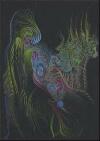 Mimir‘s third LP is a visually stunning piece of work. If you are lucky enough, you will pick up this limited edition, jewel-coloured ring of vinyl (confusingly also the second self-titled album by this group) and see what I mean. Aurally, it is terrifying in the best possible sense as only Messers. Ka-Spel, O’Rourke, Heeman, Martin and The Silverman can be. Mimir sounds off as a gorgeous nightmare with complications and convolutions of sounds put to the smoothest brain-fuck tests, then to rhythms, then to dark again. Slaughterhouse strings and I am wondering why the images that come are always so clearly noire. I am sure someone could perceive this record as lighthearted, but I cannot guess who.
Mimir‘s third LP is a visually stunning piece of work. If you are lucky enough, you will pick up this limited edition, jewel-coloured ring of vinyl (confusingly also the second self-titled album by this group) and see what I mean. Aurally, it is terrifying in the best possible sense as only Messers. Ka-Spel, O’Rourke, Heeman, Martin and The Silverman can be. Mimir sounds off as a gorgeous nightmare with complications and convolutions of sounds put to the smoothest brain-fuck tests, then to rhythms, then to dark again. Slaughterhouse strings and I am wondering why the images that come are always so clearly noire. I am sure someone could perceive this record as lighthearted, but I cannot guess who.
The cast signatures written here are completely evident and one wonders how these genius men can all work together and stay so singular as well. It would be silly to try to explain the sound created by such accomplished individuals. Trust to say, all is beyond expectation. The streamlined perfection of this slip of transparent green vinyl (or even the more readily available plain old black edition) is an ode to the benefits of professionalism, and one is grateful for that. Mimir is a beautifully velvet collaboration from the start of handling the outside, with Christoph Heemann’s gorgeous artwork to the last musical tinkling from inside the minds of madmen. No judging books by the covers? Who cares about books really, when you can listen to this?
-Lilly Novak-
Mingus – Gonna Getcha
Label: Space Station Format: CDS
“Gonna Getcha” is Tony Mingus‘ warning to the forces of Imperialism, Capitalism and general unpleasant people to watch their backs, built on a backbone of synthetic strings, a loping backbeat and some requisitely Funky guitar work. Mingus, who was among the founders of COUM Transmissions and sometime member of Psychic TV around the time of Tekno Acid Beat, drawls along in very London semi-Rap style about the evils of the arms trade, occasionally stickingafewextrasyllablesintoaline where it seems necessary.
In association with producer Steve Acutt, “Dirt” brings in some Tranced out blips, bloops and crisp breakbeats to pleasing effect; nothing fancy, just keeping up the Hyperdelic groove and letting the 303s do the talking among the sharp samples and simple keyboard tones with the odd skanking piano giving a chilled vibe. “Gonna Dub Ya” remixes the title track up in similar style, becoming quite redolent of PTV circa 1991 at the same time, coasting on a shored-up bassline and extra synth twirls to good effect.
“Don’t Play This” acts as an interim reprise before the fifth, untitled track, which makes off in Punk-Ragga-Junglist directions at a fair old lick. Mingus has done himself proud with this EP, which combines all the best functioning bits of various varieties of Dance music into tight form without necessarily pushing the boat out any further than required. Sorted.
-Linus Tossio-
Minimal Funkateers –Smirgh/Trunk/Basic Black/Sixty Nuef
Label: Black Nation Format: 12″
This lot hail from Kalamazoo, Michigan. Welcome to sub-bass land: it starts piling up – first you feel it against your chest – then you listen really hard and actually manage to hear it – last but by no means least you start to worry whether your eardrums will be permanently affected by the pressure increase. Add on top of that deep bass drum and retro drum machine-sounding cymbals, and that’s it. But that’s not it. The sum total is greater than its parts and all that.
This is about as stripped down and bare as Detroit Techno gets. There are no compromises here, no unnecessary additions, this is Techno plain and simple, they serve you up a fat dose of what you need. If you want something more than Techno – don’t buy this record. If you want you Techno neat then you could do a lot worse, the Minimal Funkateers enforce an inescapable beat – there’s nowhere else to hide. Great stuff.
– Alaric Pether –
Miss Kittin – Professional Distortion
Label: Labels (France)/Novamute(UK)/Astralwerks (USA) Format: CDS, 12″
 It was only a matter of time before Miss Kittin came to the attention of a major label in her capacity as artist rather than DJ, having put out the odd (sometimes very odd) tune over the years. “Professional Distortion” reeks of PostModern gloss and a keen understanding of the necessities of the dancefloor, cresting on a truly massive bassline and rollickingly dynamic beats while the hooks of the bleepy melody are equally self-assured. Chuck in half-sardonic lyrics about how hard it is being a celebrity DJ and the effect it has on her perception of reality, a scrawlingly fed back guitar from Tobias Neumann to inject a suitably dirty undertow of Rock emotionalism to counterpoint the lyrics and the results are certainly effective and far from crude.
It was only a matter of time before Miss Kittin came to the attention of a major label in her capacity as artist rather than DJ, having put out the odd (sometimes very odd) tune over the years. “Professional Distortion” reeks of PostModern gloss and a keen understanding of the necessities of the dancefloor, cresting on a truly massive bassline and rollickingly dynamic beats while the hooks of the bleepy melody are equally self-assured. Chuck in half-sardonic lyrics about how hard it is being a celebrity DJ and the effect it has on her perception of reality, a scrawlingly fed back guitar from Tobias Neumann to inject a suitably dirty undertow of Rock emotionalism to counterpoint the lyrics and the results are certainly effective and far from crude.
Remixes follow: from Modeselektor, whose “Big Muff” mix ups the distortion levels as the title would indicate, while stripping back the actual layers to a sparser set of sequences which eventually drop out the Dubs, with the rewind coming back like a souped-up Alien Sex Fiend grind of guitars and chirpy electronic grunge until pushing the track to the limits of its rhythmic and compositional capabilities; from Otto von Schirach in his degenerative laptop-scrunched “Gods Magnetic Cereal Pamper” mix, which brightens, polishes while thoroughly attempting to strip the title of much identifiable relationship to the original material along the way; and in an “Aka-Pella” mix vs Zdar, where the tune becomes a slow-burning bassy accompaniment of fuzzy chords to Miss Kittin’s sung parts.
Finally, the CD single includes a PC/Mac-only interface (everyone else can play the MPEG file given a bit of fiddling) to a neat lo-fidelity video for the unremixed track, all hand-written cue cards and childish drawings of Miss Kittin playing guitar and leaving paw prints. A more MTV-friendly video can also be found to stream from here.
-Freq1C-
Misterbuster – Major F’ing Stars
Label: Misterbuster Format: CDS
Misterbuster are Mike and Ben – they have a website where visitors can interact with them musically. This CD EP has three tracks to sample their own music on, and it starts with “Elevator Accident”, running hyperspeed beats through a crunchy machine. Is it Techno or is it live? Closer to the first, at a wild guess; bleeps and sweeps of mish-mashed sample intrusions make things less than comfortably linear, as liberties are taken with the levels and filters applied to an emergent dynamic of breakbeats and grooves – tablas included. Everything is surprisingly upbeat at times, even approaching cheesy, but with a knowing sneer as the bass wobbles into synth noodles which would make the young Aphex Twin proud at the spread of analogue eclecticism.
“Where Are We Going?” seems to be heading into Tribal pastures at first, even to the point of including a digeridoo among those sweeping synths and electronic marimba and bottle-chinking rhtyhmic shuffles. The it just does it’s own thing, meandering off into the depths of rhythmic shenanigans which probably aren’t really intended for dancing to – is this a continuation of drum solos by other means? Well, if it’s not, then “Fatty, So Nasty” takes a Hippy Country MIDI wander over the digital hills and far away to the accompaniment of a slightly more real-sounding dumkit, bongoing like crazy till the synthetic cows come home on their banjadelic stomp mission. What are they putting in the water these days? It certainly seeems to have affected Mike and Ben’s sense of propriety, or else they made the transition into a self-propelled miasma of hopscotched funky breakbeat boogie of their own accord; which is a reasonably frightening thought, as is the one which imagines the determinedly silly grins they must have had while making this particular piece of sonic tomfoolery.
-Freq1C-
Misterlee – Night Of The Killer Longface
Label: Rubber Czech Records Format: CD
I’m not normally a fan of jangly guitar music, it has to be said, or a follower of the cult of the singer-songwriter, apart from a few exceptional cases that are quirky enough to appeal. Opening number “The Caligula Waltz” from off-the-wall English folkster Lee Allatson a.k.a. Misterlee certainly made me prick my ears up though. I’m not sure exactly where he’s coming from but it’s definitely somewhere that Syd Barrett and Captain Beefheart have been; Tom Waits goes there on his holidays and the Beatles drove past there in the later years of their collective trip. The ramshackle stomper of an opening track has a pleasantly scratchy Waits kind of sound, with manic laughs and faux-blood-curdling screams to boot, plus a recorder solo, which is a fine way to start off an album in my book. The surrealistic lyrics give a good taste of what’s to come too.
Misterlee is very much a one-man-band kind of chap; you can easily picture him standing in the bandstand in Hyde Park, guitar in hand, with a kazoo strapped to his head, operating a rickety old bass drum with one foot and an oscillator scavenged from an old Roland with the other. In the studio however, he’s not afraid to dub the tracks on liberally, even hitting a thick, Velvets-ish level of fuzziness as on the chaotic “Job on a Bike” (that’s Job as in pillars of salt, not as in careers). Other times the sound is much sparser, with “Fortune Telling Agnes” for example sounding like it was recorded mainly on a toy Casio keyboard. Not many of the songs have the same raucous energy as the opener though, possibly excluding “Black Soul” and the suggestive “Natural Born Blond”.
He’s definitely at his best in the more upbeat moments, it has to be said, having a slightly twee side that comes to the fore more in the slower songs. Any particularly idiosyncratic music runs the risk of attracting accusations of self-indulgence, although that’s a very subjective thing. The piano-led mock-sinister orchestrations of “Lazified” do work very well though, and sound surprisingly like Marc Almond from a certain angle. And “Goodbye Lullaby” at the end, with its ukelele and whistling, is by far the most twee on paper, yet is sung with such a touching earnestness that it manages to redeem itself. Wait for the hidden track too and you’ll see what I mean about Marc Almond.
-Andrew Clegg-
Mix Master Mike – Anti-Theft Device
Label: Asphodel Format: CD,2LP
Just about the cleverest mix of beat juggling, sample-styling and general all-round turntable fireworks since – ooh, Otomo Yoshihide – Anti-Theft Device is soooooo sure of itself it screams quality. Mix Master Mike is in the house and on the decks all right – sometimes off the planet too. However uneasily his self-aggranisement in the turntablist stakes might sit (Serial Wax Killer?), at least it’s not entirely unwarranted immodesty. As befits a key member of the astonishingly competent Invisibl Skratch Picklz, Mike can take a few slabs of choice vinyl anywhere he damn well wants with the aid of his decks and mixer.
Mixed as a continuous flow of beat, scratch, drops and rewinds, Device is at times the HipHop equivalent of a guitar soloist’s virtuoso vanity project (think maybe Steve Vai or Jimmy Page) – but much, much more enjoyable. The dextrous use of cross-fader and judicous sampling science deployed shares the same gleeful immersion in the co-ordination of hands and ears as the flickeing fingers, wah-pedal and double-necked guitar of the most pompous of Progsters. There’s even some kind of vaguely dystopian Skiffy (that’s mid-range Sci[ence]-Fi[ction] to you, guv) concept album theme lurking in the atmosphere – check out the C3P0 bleep-scratch in the excellent “Well Wicked” – but this is frankly irrelevant in the face of what stands on its own as an entirely full-on, in yer face (and all over the place) work of sampladelic mix-mastery.
-Freq1C-
Mix Master Mike – Suprize Packidge – The Automator Remix
Label: Asphodel Format: 12″,CDS
Reconfigured from the album version into a radio edit and a longer verion by the Automator, “Suprise Packidge” emerges as a funk and strings workout of the hard-disc and scratch variety – loping breaks, cello loops and some regurgitated turntable action. Despite the pointlessness of the short edit if you’re not a radio DJ, what emerges is a stripped-down and extended variation on the original which concentrates less on the intricacies of fader manipulation in favour of a relatively straighforward booty-shaking floor filler.
Xopher Davidson and Alex Oropreza restructure the previouly unreleased “Audio Mass” into a series of briefly engaging swipes and switches, but somehow none of the remixers quite match the brio of the tracks’ originator. Not that it’s a bad EP at all, more that it does what it does, then ends without much lasting impact, and is probably going to be best heard in a club.
-Freq1C-
MK2 – Shaolin Soul
Label: Groove Attack Format: 12″
With a name like “Shaolin Soul” you could be forgiven for expecting something that resembles Photek. My advice is to stop right there – this sounds nothing like Photek. Place more emphasis on the Soul than the Shaolin and you`ll be closer to the mark.
Essentially “Shaolin Soul” is Hardstep – Soulstep perhaps? It starts off with funky Soul scoops, and the omnipresent Hardstep breakbeat joins in to start its broken repetitions. Then at some point it does what Hardstep does best – it brings in one of the wobbliest basslines you`ll ever hear. Its good, not the best Drum and Bass I`ve heard, but very reasonable none the less.
So, having brought up Photek, how does “Shaolin Soul” compare with the likes of Photek, Current Value, or Source Direct? It doesn’t, but that’s not to say MK2 doesn`t have the potential … read on. The B side is much better: “Year 2000 And Beyond” is a nice, bassy, and generally mellow HipHop/dopebeat track. The real star of the show has to be “1/0” – which if my maths is up to scratch is another way of expressing infinity. Now, I like me hiphop slow, and this is really really slow. “1/0” is one of those tracks that sounds like it should be played at 45 rpm – it gets rather muddy at 33 rpm. At 45 speed its moments of 303- ness sound rather conventional, but at 33 it’s a different story altogether. The 303 becomes sludge beast, ambling between a piano scoop that would make the B>Wu-Tang proud. I would have played it at 33 regardless, it just pleased me so much that this was the sound MK2 intended. “1/0” should have been the title track of the record. The overall quality is very good, but “1/0” is superb.
-T. Mephistati-
Mkl_171 – Jelenska Huta
Label: Olivahouse Format: 2CD
 Jelenska Huta is a massive wall of Ambient drones. Now, Mkl_171, AKA Morfeusz, doesn’t get side tracked with silly things such as beats or anything like that. This isn’t chill out. It’s a big heavy slab. This is the kind of ambience where time stops dead in its tracks. The drones could last for a minute or a year. Unless you are studiously watching your CD timer there’s no way to tell. I turned my CD player on and the room began to vibrate. Your neighbours may not hear it, but they’ll certainly feel the music. The sound is somewhere between a distant storm and an infinitely protracted roar. Mkl_171’s unreleased Ambient works are dark, heading towards being sinister, but that’s fine with me.
Jelenska Huta is a massive wall of Ambient drones. Now, Mkl_171, AKA Morfeusz, doesn’t get side tracked with silly things such as beats or anything like that. This isn’t chill out. It’s a big heavy slab. This is the kind of ambience where time stops dead in its tracks. The drones could last for a minute or a year. Unless you are studiously watching your CD timer there’s no way to tell. I turned my CD player on and the room began to vibrate. Your neighbours may not hear it, but they’ll certainly feel the music. The sound is somewhere between a distant storm and an infinitely protracted roar. Mkl_171’s unreleased Ambient works are dark, heading towards being sinister, but that’s fine with me.
-VL-Fiend-
M’Lumbo – The Nine Billion Names Of God
Label: Multimood Format: CD
 This is the music of nightmares. I don’t mean that it’s bad, but it is disturbing. The dense mix of sampled voices, beats, musical genres and the general sensation of them all coming at you at once is almost overwhelming. If you are thinking of using any recreational substance or chemical refresher while listening to this then think hard. How tough is your psychological constitution? Put down that fourth can of Carlsberg Special.
This is the music of nightmares. I don’t mean that it’s bad, but it is disturbing. The dense mix of sampled voices, beats, musical genres and the general sensation of them all coming at you at once is almost overwhelming. If you are thinking of using any recreational substance or chemical refresher while listening to this then think hard. How tough is your psychological constitution? Put down that fourth can of Carlsberg Special.
Pick any track, “God”, for instance. Here you’ll find a fractured choir, circus/cartoon music, a disembodied preacher repeating, ‘How do you speak to God ?’ among the other voices that blend with backward running tapes. Then there are a few apocalyptic figures from the horns. Yes, these people play instruments too. In fact, at times, I get the impression that there is music trying to get out of this overstocked closet of noises. But by the time they’ve spliced one more layer onto the track the voices in your head are saying things you’d rather not hear.
On “Fun With The Blues”, you just know it’s not going to be either. Once again, a voice suggests, ‘Now let’s have some fun with the blues’, while all around a sonic terror develops. Other sampled voices are trapped in the maelstrom and they are not talking to each other. Saxophones, flutes and all manner of percussive devices cut in and out but by now (the last track) you’ll have become afraid to leave the room and wonder if the CD will ever end…….
-Paul Donnelly –
Mocky – Show Me That You’re Mine EP
Label: Zephon’s Mom Format: 12″
The last time I saw Mocky perform, he’d changed his name to The Musical Truth and looked like some weird kind of Hip Hop mediaeval executioner. Naturally, on the strength of this alone, the Show Me That You’re Mine EP aroused my curiosity. As it turns out Mocky – the alias of Canadian born Dominic Salole – is trained in Jazz, the first MP3 artist in the UK, and part of Gaia Live – the UK’s first 24 hour Internet radio station. There’s a lot of firsts there.
Generally, this record collapses under the weight of its own funk. Tracks like “Show Me That You’re Mine” itself or “Soul Control” start off in a well-meaning enough Housey-Hip-Hoppy manner, only to falter and break into a Jazz chaos of Miles Davis, Steve Reich, and Karlheinz Stockhausen descent. Little else around sounds like this EP; it’s an obscure and seriously heavy record. I mean it, it took about 3 times the normal amount of vinyl to contain this much Hip Hop. Yo, nice.
-Les McQueen-
Moistboyz – III
Label: Ipecac Format: CD,LP
 Walking the delicate line between righteuos parody and stupidity with their size eleven boots on, Moistboyz tackle the phallocentric grind of hard rockin’ American blue collar with loud guitars and even louder attitude, trampling on political correctness with all the Commie-bashing concern for propriety of Ted Nugent and Chartton Heston combined. Except of course this is Ween in disguise, and while they can pull off pretty much anything in any genre they tackle for a while, after ten tracks, their third album takes a bit of getting used to. Lurching from the Bluesy hardcore Punk spasm of “The Walker” to the melodic balladry of “Black Train” (which wouldn’t be out of place on any number of FM radio stations to accompany an endless Interstate drive), III puffs up its chest and swaggers with the all-too realistic sound of America enraged.
Walking the delicate line between righteuos parody and stupidity with their size eleven boots on, Moistboyz tackle the phallocentric grind of hard rockin’ American blue collar with loud guitars and even louder attitude, trampling on political correctness with all the Commie-bashing concern for propriety of Ted Nugent and Chartton Heston combined. Except of course this is Ween in disguise, and while they can pull off pretty much anything in any genre they tackle for a while, after ten tracks, their third album takes a bit of getting used to. Lurching from the Bluesy hardcore Punk spasm of “The Walker” to the melodic balladry of “Black Train” (which wouldn’t be out of place on any number of FM radio stations to accompany an endless Interstate drive), III puffs up its chest and swaggers with the all-too realistic sound of America enraged.
The problem is of course that their piss-take is so convincing in its celebration of all things Rock’n’Roll and draped in Old Glory that they might as well be burning up the stage at any of a million or so redneck bar-room hoedowns from Atlanta to roadhouses in Montana with hardly a touch of irony. Somewhere between the tightly-coiled musicianship of Shellac and Metallica with hefty doses of Cheap Trick and ZZ Top along the way, and with vocals largely delivered through megaphones, Dickie and Mickey Moist tweak the tail of the awoken American dragon in an all-too accurate fashion. So, taken on that level, the Moistboyz put their all into throat-scorching blasts of choppy guitar and chiming harmonics like “The Tweaker” or the chugging grind of “Shitheel”, the Sabbath-inflected “I’m Gonna Kick Your Ass” and stop/start overdriven nickel-turning crowd-pleasing energy of “The Spike” just like they mean it – and love it too.
Taken to its extremes on the (apparently) militia-friendly “Great American Loser”, the patriotic fervour mixed with down and dirty grungy Punk and Metal rockets off into orbits of mock-machismo sometimes best left unexamined. However,, a nice irony on this European release is the sleevnote which states “Made In America – Manufactured In France”. Fortunately or otherwise, the album clocks in at just under thirty minutes, which is probably still a little over the maximum length for this sort of thing. Come to think of it, maybe this isn’t a joke after all – what if they meant it all? Scary, but often enjoyably so in smaller doses.
-Richard Fontenoy-
Monks – Demo Tapes 1965
Label: Munster/Play Loud! Format: CD,LP
 1966’s Black Monk Time, the sole album from American GIs turned musical iconoclasts the Monks, has benefited from a ever-rising cultural cachet in recent years via reissues, critical reappraisal and word of mouth, making the journey from a one-in-a-million record collector oddity to a vital touchstone of proto-punk underground rock, with writers and musicians falling over each other to testify to the legend of the Monks’ minimalist nihilism and aesthetic shock tactics.
1966’s Black Monk Time, the sole album from American GIs turned musical iconoclasts the Monks, has benefited from a ever-rising cultural cachet in recent years via reissues, critical reappraisal and word of mouth, making the journey from a one-in-a-million record collector oddity to a vital touchstone of proto-punk underground rock, with writers and musicians falling over each other to testify to the legend of the Monks’ minimalist nihilism and aesthetic shock tactics.
And rightly so, as Black Monk Time is undoubtedly an extraordinary record in many ways, but I can’t help but think the band’s cultural importance is getting a little misinterpreted. Most of the declarations of Monk-Love to turn up in print recently have tended to begin by scribbling a quick sketch of the mid-60s music scene as a realm of upbeat hippy pop and easy-going vibes into which the dark spectre of the Monks pounced out of nowhere with an terrifying outburst of mind-blowing musical barbarism. Take a look at ’60s rock that extends beyond the clichés however, and you’ll see that the violence of Monk Music was hardly unprecedented in late 1966. In Britain, The Troggs had spent most of the preceding two years churning out slabs of their ultra-repetitive caveman bliss, building on the equally raw early work of The Kinks. In America meanwhile, the landmark rock’n’roll mentalism of The Sonics‘ first album dropped in ’65, and by the end of ’66 audiences had been subjected to the buzzsaw distortion of The Shadows of Knights‘ “I’m Gonna Make You Mine”, the extraordinary WRONG-ness of The Elastik Band‘s “Spazz” and the speed and acid insanity cocktail that is Love‘s “7 & 7 Is”, amongst others. And, unlike the Monks, most of those groups actually scored hits, suggesting that listeners weren’t exactly cowering in fear every time some wildman stomped on his new fuzzbox.
Trying to frame Black Monk Time, with its fairly conventional lead guitar and organ parts and its tendency to hide unashamedly pretty songs beneath the martial pounding, as a benchmark for garage-rock brutality just doesn’t hold up. No, far better to champion the Monks for their ideas and calculated subversion. Their geek-gang mentality and profoundly weird monk attire, their incorporation of stomping, militaristic tempos and jilted, authoritarian yelping, their obtuse and ambiguous expressions of political satire, their mysterioso black album cover – this was most assuredly NOT the way the emerging counter-culture of the mid-sixties usually did business. The timing here is all important of course; if the Monks had emerged in ’68 they could easily have been lost amid the innumerable gangs of gimmicky freak-flag flyers rolling up to cash in on the brief major label faux-psychedelia boom. But this is SIXTY SIX we’re talking here man, and, as if to prove the point beyond doubt to time-nazis like me, Munster records have now masterminded the first official release of the Monks demo tapes, serving to push back the genesis of Monk-Music to 1965. So yes, whilst teenage America was getting down to “Louis Louis” and Dylan was pissing off the folkies with his electric guitar, over in Germany our heroes already had their shtick down. And if these demo recordings are perhaps less focused and less aggressive than the versions which were eventually released for public consumption, they are in some ways even more startling.
The key to the Monks genius lies I think in the unprecedented deconstructionist approach to music. Reversing the usual punk-savant formula of untrained delinquents wrestling accidental genius out of their instruments, the Monks were consummate professional musicians, used to playing all night sets of dance band pop as their civilian alter-egos The Five Torquays, who took the decision to jettison nearly every building block of conventional popular music, from the melody on down. And it is this deliberate minimalism, aiming to shock, confuse and excite listeners in ways few had attempted before, which helps cement the Monks’ true legacy as the originators of a lineage of conceptual outsider pop malcontents that runs from The Residents and Devo through to Clinic and The Fall.
The main revelation provided by the Demo Tapes is just how radical and far-reaching this deconstruction was. Some of the songs here are allowed to meander into longer jams than was permitted on Black Monk Time, often without interjections from the vocals and guitar which provided the recognisable hooks on the finished album. For several minutes at a time on songs such as “Higgle-dy Piggle-dy”, the sound is stripped down to just the inventive and hyper-repetitive rhythms of the drums and bass and the distinctive thwack of Dave Day‘s banjo, creating an unnervingly primal sound with scarcely any resemblance to song-based rock’n’roll. This process can be heard to best effect on “Space Age”, a song which developed into Black Monk Time‘s “Blast-Off”, but is presented here minus the hokey surf-riff that normalised the album version, but with chiming steel drums and a truly weird echoed recording instead, sounding less like any conceivable kind of rock band and more like a Moondog performance produced by Joe Meek.
The demos includes several older, previously unheard songs which were presumably dropped from the Monks repertoire for being too much like regular pop songs, but even these are given an uncompromising Monk-Music makeover, emerging like some sort of collapsing carnival nightmare music. “Pretty Suzanne” drips with unhinged acid rock soloing and staccato yelping, whilst “Hushie Pushie” features tripped out a-cappella vocals about a lost cat and instrumental sections that sound absurdly similar to the kind of inventive West African guitar pop which you can be near certain the Monks had never heard, assuming recordings of it even existed at this point (I’m no expert). Add to this the kooky church organ and spoken word introductions that the band or their managers saw fit to tack onto every song here, and truly we have a recording like no other.
The CD is rounded off with two tracks cut some time earlier by The Five Torquays (“There She Walks” and “Boys are Boys”), and the contrast between their groovy ’60s pop stylings and the cavalcade of madness which has preceded them is remarkable as it is hilarious. Whilst they are perhaps not, as allmusic.com claims of Black Monk Time, “the strangest recordings ever made”, the Monks demos are still about as far-out as anyone in the world was getting in 1965. Not so much ‘off the wall’ in the context of their time as ‘buzzing circles around the ceiling giggling to themselves’, these songs make essential listening for any connoisseur of the strange and inexplicable.
-Ben Haggar-
Monno – Ghosts
Label: Conspiracy Format: CD
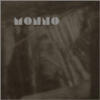 Would it be a cliché to say that Ghosts is a haunting album? Most likely, but not to worry. Monno, from Belgium, make dark music in epic proportions. Ghosts is fantastic: ultra slow, droning, and doom laden. Think metal the speed of Burning Witch, but less vocal and more atmospheric. I love the way high pitch electronic drones hang above crushing riffs. And the riffs are crushing, grinding, brutal, gloomy, and spot on. Monno are giving us a lesson how to play guitar here. It isn’t all slow, though. “Troye” is up tempo, by doom standards at least. As for “Hull” … “Hull” is utterly ballistic. A frantic hardcore rush of guitar and electronics charging headlong towards you. Like The Locust but looser, dirtier, and every bit as demented.
Would it be a cliché to say that Ghosts is a haunting album? Most likely, but not to worry. Monno, from Belgium, make dark music in epic proportions. Ghosts is fantastic: ultra slow, droning, and doom laden. Think metal the speed of Burning Witch, but less vocal and more atmospheric. I love the way high pitch electronic drones hang above crushing riffs. And the riffs are crushing, grinding, brutal, gloomy, and spot on. Monno are giving us a lesson how to play guitar here. It isn’t all slow, though. “Troye” is up tempo, by doom standards at least. As for “Hull” … “Hull” is utterly ballistic. A frantic hardcore rush of guitar and electronics charging headlong towards you. Like The Locust but looser, dirtier, and every bit as demented.
Everyone needs a copy of this album.
-Alaric-
David Mooney – 7 Parts From The Rhythmiconic Sections
Label: Expanding Format: 7″
Comprising seven selections of the full 24 which make up the Rhythmiconic Sections, the A-side of this rather nicely deep blue 7″ single whirr, click and cime in fragrant Avant electronic style, splintered chirrups and faux-string mania and all. There are robotized, chorused and processed voices inserting comments and what might be slogans but could also be passing remarks. Sentences are bracketed and punctuated with trills and runs of miscellaneous bleeps. The space these parts of the greater whole remain determinedly Modern in that nothing is obvious, and all may be interpreted.
Which is just what Ben Edwards and Stendec do on Side B. The latter marches in with a “Garbanzo Poem” mix, tickling and tweaking the further disembodied voices, reedy synthetic sounds and faraway keyboard meanders in a slow dub accretion which goes nowhere in particular, but does it with precision and a degree of correct aplomb. As Benge, Edwards holds the atmosphere of off-key chimes and detuned dissonance within, but with an uncoiling backdrop of the faitful glitch. The frisson of electronic intermeshing makes for an abstract versioning, crisply pleasing and deft in its lightness of rhythm.
-Freq1C-
Thurston Moore – Root
Label: Lo Recordings Format: CD,2LP,6×12″
Ever willing to collaborate, innovate and extend the possibilities of expansion still left to the guitar, Thurston Moore sent out thirty one-minute guitar pieces to various likely fellow musical and artistic deviants, and the resulting mini-hoover-bag package(!) is the result. Okay, as this is a remix project it almost has to involve Alec Empire, Luke Vibert and Stock, Hausen and Walkman – but since Empire’s is a neat mix of guitar plucks and trademark distortion beats which interface very nicely indeed, that’s just fine. Ditto for the Vibert and SHW versions, neither of which overwhelm Moore’s playing with their own breakbeat tendencies, though the latter work is the most effective squeak and blip transformation of the record. What’s more of a surprise is the virtual jam built by Blur – maybe those rumours of artiness weren’t entirely unfounded after all.
For all the expected names and their (occasionally surprising) methodology – Add N To X (noisy electronic pulses), Spring Heel Jack (morphed sample layers), Merzbow (grinding volume explosions), Bruce Gilbert (buzzing delays), et al – the sense of collective endeavour is particularly welcome, over and above the mordant pleasures of the straight remix album. Add in the Art not Dance factor which allows for some playful atonality and arrhythmia between the occasional groove-based tracks (such as Stereolab‘s not-quite-hands-in-the-air contribution), as well as the patient explanation (with acconmpanying demonstration) of the finer points of guitar technique from Derek Bailey, or the hiply-London breakbeat Blues collage of Cheap Glue, and what emerges is a compilation which harks back to its origins in Lo‘s excellently cross-pollinated United Mutations while developing the possibilities of genre-battering from a more secure foundation.
What’s evident above all is the sense that most contributors have done their best to stretch themselves out of the remix-tracks-for-cash framework (The Hypnotist even Rocks out in Industrial Metal style), and into something far more interesting. With twenty-five artists and groups present there’s plenty of space for both inconsistent juxtaposition and appropriate segues, even if the resulting rollercoaster effect leads to occasional lurches. It’s easy in these days of rampant post-Modernism to cobble together a bunch of sampler-jockeys to make a reasonable enough themed album – where Root works is in the detailed attention payed by (most) players to self-diversification and the welcome interpolation of the unexpected.
-Freq1C –
Muriel Moreno – Required Elements
Label: Note Off Format: CD
 Required Elements is, at its most basic, an album of chilled-out, Dub-influenced Electronica. Surprisingly it’s entirely instrumental, save for a few vocal samples looped to good effect. Moreno is most famous as the vocalist for French chart band Niagara; a role she’s filled since the late Eighties (and which never really hinted – to be honest – at an ability to produce an album of this calibre).
Required Elements is, at its most basic, an album of chilled-out, Dub-influenced Electronica. Surprisingly it’s entirely instrumental, save for a few vocal samples looped to good effect. Moreno is most famous as the vocalist for French chart band Niagara; a role she’s filled since the late Eighties (and which never really hinted – to be honest – at an ability to produce an album of this calibre).
Unfortunately, the album opens badly. Which is a shame, as it gives entirely the wrong impression of what’s to come. But the first track limps uninspiringly out of the speakers with an irritating organ line and a flaccid, formulaic rhythm – any track called “Intoxicated Days” shouldn’t call to mind Willesden on a wet Sunday afternoon. Or maybe that’s the point? Who knows? What I do know is that it’s a bloody awful way to launch an album. Thankfully things improve immediately with “Army Of Sundays” which, despite being tainted by its proximity to the banal intro, is much more indicative of Required Elements as a whole. An ethereal voice loops and juxtaposes splendidly with some genuinely inventive percussion and an energetic bass-line (and whilst I don’t wish to reinforce any stereotypes or paint a caricature, I have to say that there’s something pleasing about a soft female French voice that can’t seem to be emulated in English). By the end of the second track, you’ll have banished “Intoxicated Days” from your mind and be willing to discover the real treasures that lie within this album
The title track follows hard on the heels of “Army Of Sundays” and once again makes great use of short disembodied vocal loops, this time wrapped round an eerie melody and percussion arrangement (calling to mind Brian Eno‘s Nerve Net of all things). And so it continues… there’s Eight tracks here (plus a remix) and once the initial hurdle of Track 1 is overcome, there’s something worthy to be found in them all. From the pumping “You Can’t Get Rid Of It”, which could fill the floor at a meeting of the Chorophobia society, to the near-baroque arrangement of “Plastic Jesus”, which gets my nomination for the album’s best track. It summons up images of a world-weary Humphrey Bogart trudging wearily through Parisian backstreets in a late-Forties film noir that was never made. Nice.
Required Elements falls between two different musical styles, but manages to find a comfortable place to land. It’s not Dance music (though some of the tracks here are eminently jig-worthy) and it’s a tad energetic to be true chill-out fare. Instead it exists somewhere in the middle; the perfect Saturday afternoon CD; enough interesting noises to make it listenable, and plenty of bouncy beats to get you in the mood for a night out.
It’s one track too long though. But I think you already know that.
-Grufty Jim-
Morfeusz – Songs Vol. 1
Label: OlivaHouse Format: CD
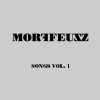 Songs is a bit of a misnomer for this album, as all the tracks are largely electronic intrumentals with not a tuneful melody or sung voice to be found. Nevermind, there’s plenty to wade into on here, as Morfeusz wander the appositely dark reaches of half-waking dreamspace Electronica, cruising from the lengthy opening piece “Solipse 99” through the rumblings of the equally long and even more ominous “Lines Inferior Enhhanced +”. There are chunky breakbeats and bass swoops aplenty on the comparatively cheerful “The Cup Is Full”, but only smiling in a rictus grin which wouldn’t be too out of place as a doomy low-end releases from Wordsound. Likewise, the faster tempo of “Mikka Ibn Hades Goes Warped” is accompanied by some minor chord breakdowns which, while dancefloor-friendlier, are only going to be ecstatic for those of a hardcore Trance disposition who like pitch black clubs for their unwinding.
Songs is a bit of a misnomer for this album, as all the tracks are largely electronic intrumentals with not a tuneful melody or sung voice to be found. Nevermind, there’s plenty to wade into on here, as Morfeusz wander the appositely dark reaches of half-waking dreamspace Electronica, cruising from the lengthy opening piece “Solipse 99” through the rumblings of the equally long and even more ominous “Lines Inferior Enhhanced +”. There are chunky breakbeats and bass swoops aplenty on the comparatively cheerful “The Cup Is Full”, but only smiling in a rictus grin which wouldn’t be too out of place as a doomy low-end releases from Wordsound. Likewise, the faster tempo of “Mikka Ibn Hades Goes Warped” is accompanied by some minor chord breakdowns which, while dancefloor-friendlier, are only going to be ecstatic for those of a hardcore Trance disposition who like pitch black clubs for their unwinding.
There are loosely Hardbeat and Industrial aspects to the beats and rhythms, with glancing nods to breakbeat Techno and even snippets of Electro-Funk. Much of the Morfeusz sound is built around sequenced mechanisms yet still exudes a sinister organic mood, with hints of, say, Download‘s dark groove present. The uncoiling shifts of the piano loops and tectonic bass of “Dumka” gnaw tenaciously at the boundaries of tingly irritance and squirming endurance, while “Debience Final” crumbles its farewell in a haze of digital discord and swept cross-echo. The heavy atmosphere means that Songs Vo.l. 1 is a CD which requires the correct circumstances for full attention; crashed flat out in a darkened room would do for a start, as the oppressive nature of many of the sounds used makes easy background listening not much of an option.
The use of reverse samples, reverb and the dubbing in and out of percussion and synth tracks throughout is effective enough to overcome the overlong running times of some of the pieces here. By the time a state of steady hypnotic immersion is reached, the shifting textures have usually woven a blanket of churned-up dynamics to a point where time is put on hold anyway. The carefully-built rhythmic constructions benefit greatly from choice placement of some lo-fi electronic effects, and there’s much to recommend in this darkling set from Poland for running the odd electronic chill over the skin.
-Freq1C-
Morphogenesis – In Streams Volume 2 (1997 – 2000)
Label: Paradigm Format: CD
 The impossibly lovely digipak opens like one of Mr. Prime‘s flowers to reveal four live actions recorded and yet on first look the overwhelming images are of motion and fatigue. There is a sense of workmanship in these images – the recordings are living beings in themselves – a sense of something happening. Breaths and slowly lowing metals and twisting of gears. In headspace and out of it. The Kunstkopf. Short waves wriggle through and past the other sounds writhing like Mongolian yellowworms that haven’t even been catalogued yet. The echo of the hall shadows the proceedings, shattered into ebony fragments at the stringboard’s call. How much is processed? How much of these sounds are affected, and is the finger which is at times leveled at experimental music seeking for “honesty”, however facetiously?
The impossibly lovely digipak opens like one of Mr. Prime‘s flowers to reveal four live actions recorded and yet on first look the overwhelming images are of motion and fatigue. There is a sense of workmanship in these images – the recordings are living beings in themselves – a sense of something happening. Breaths and slowly lowing metals and twisting of gears. In headspace and out of it. The Kunstkopf. Short waves wriggle through and past the other sounds writhing like Mongolian yellowworms that haven’t even been catalogued yet. The echo of the hall shadows the proceedings, shattered into ebony fragments at the stringboard’s call. How much is processed? How much of these sounds are affected, and is the finger which is at times leveled at experimental music seeking for “honesty”, however facetiously?
A sense of whirling in a tube rattles down the pike, along with the sonorous tones of the instrument. Which one? A moot point – all sound is fair game and the hunters peck about here and there, hither and yon, finding this one, bagging that other one, no, over there, the one that sounds like a pachinko game on the slow bus. Into a crescendo now, various tones mixing with scraping and do sounds recognise each other, old friends in the marketplace, as they pass one another in a recording? And now Freddy “Boom Boom” Pachebel and his Canon enter into the background, playing over the sounds feasting on one another…
A more tentative moving around of sounds plays with a highpitch, fast and inside, splaying behind it. Huntenmusik? The child has six fathers and proceeds to awaken, crying (a little) and transmogrifying into this gas bubble, that violin, that Drano. The ghost of a chants? And the currency of the times – minutes, 19 of them, spins once twice, landing on its edge. Police sirens, now, and voices. Clouds mass across the stage and the Speaker-Eater raises its subjective head once again, threatening, threatening…the thunderclap, and the audience’s besides…
Gongs resonate and cheering for unseen sounds resonates, and the zebra cries out in the vast zoo of sound as the band plays on. A massing menagerie blends with the bird outside my window, and perhaps a mouse or two I cannot see. Life and the recording have merged for this one free moment and it’s…well, it’s quite nice, that.
-David Cotner-
Christoph Gallio Mosioblo – A Robert Filliou
Label: Percaso Format: CD
Gallio, a saxophonist, has gathered a quintet of voice, guitar, clarinets and trumpet/flugelhorn to perform a suite based around the works of Fluxus artist Robert Filliou. There are 36 tracks in all, some of which use only the instruments, while the majority feature Filliou’s words. These texts come from Speigelschrift 5, ‘A Selection From 1000 Basic Japanese Poems’. I think it is simpler to call them ‘texts’ because they are not poems or songs, they are simply utterances arranged in various line lengths on the page and set to music. Here’s an example :
Fat,oil,lard,grease,gasoline
the bottom of the heart?
nothing but fat
oil lard grease
gasoline
To accompany this Gallio, sometimes along with other members of the ensemble, has composed mainly angular, austere music to be sung, or intoned, in a fairly deadpan manner by the mezzo soprano, Sarah Maurer. The instruments offer brief asides, together, as solo voices, or in unison with the singer. Sometimes I found the relative formality of the music a little at odds with some of the texts. Maybe that is an intentional contrast but I found Filliou’s prosaic text about the death of his dog silly compared to the spare, cold music. On the other hand there are moments of great delicacy and subtlety when the music is unadorned by text and the voice wordlessly becomes a more integral part. Listen, for example, to the non-textual offerings between tracks 14 and 17. These are tracks (14 and 15) which allow Gallio’s abrasive sax to have a say and feature the trumpet/sax/guitar on a short jazzy ensemble piece. Track 17 also features some interesting vocalising from Peter Scharli‘s trumpet and the abstractions of Maurer’s voice. Check track 26 too for the sublime clarinet feature from Thomas Eckert; short , plaintive and inventive.
I tried to listen to each piece as a separate item and it was a mistake; their brevity can make the suite sound bitty and fragmentary. So I would suggest you listen to it as a whole and not pay too much attention to the texts at first, or at all. There are some truly absorbing moments here but not usually when Filliou’s words are involved !
-Paul Donnelly-
Mothlite – The Flax Of Reverie
Label: Southern Format: CD,2LP
 The Flax of Reverie is the gorgeous symphonic début from Daniel O’Sullivan (of Guapo, Miama and The Carousel Of Headless Horses and Æthenor) and Antii Uusimaki (of Panic DHH). I could make comparisons with Pink Floyd, Coil, or even the sparse melodic folk rock of Tenhi. To me they also seem to explore similar territory to the more delicate moments of prog metal, they reach the same levels of intensity but not in quite the same direction as metal. Specifically, I’m thinking of the melodic side of Agalloch. I’m clutching at straws looking for comparisons, though. Mothlite are too original and distinctive to pin down that easily. Each song is a musical journey, the sound is by turns dark and moody, rich and lush, or a gentle drifting texture. Moody melancholic piano keyboards weave in and out of rich choir like walls of vocals, pierced occasionally with wailing strings.
The Flax of Reverie is the gorgeous symphonic début from Daniel O’Sullivan (of Guapo, Miama and The Carousel Of Headless Horses and Æthenor) and Antii Uusimaki (of Panic DHH). I could make comparisons with Pink Floyd, Coil, or even the sparse melodic folk rock of Tenhi. To me they also seem to explore similar territory to the more delicate moments of prog metal, they reach the same levels of intensity but not in quite the same direction as metal. Specifically, I’m thinking of the melodic side of Agalloch. I’m clutching at straws looking for comparisons, though. Mothlite are too original and distinctive to pin down that easily. Each song is a musical journey, the sound is by turns dark and moody, rich and lush, or a gentle drifting texture. Moody melancholic piano keyboards weave in and out of rich choir like walls of vocals, pierced occasionally with wailing strings.
They take their name from Stan Brakhage‘s film Mothlight, which comprised of foliage and natural detritus fixed directly onto the celluloid. This is how Mothlite approach music. There is something incredibly natural and organic about The Flax of Reverie, something very English too. There is something else as well, though. It isn’t the familiar English countryside they conjure up – Mothlite take us to quite another place, somewhere haunting and lyrical. This album really doesn’t sound like a début. It is so richly composed, performed and produced. A testament to O’Sullivan’s compositions and Uusimaki’s production. The musical ideas are so clear and definite, Mothlite know exactly what they are doing, where they are taking us, and have created a unique and stunning album.
-Alaric-
Moth Wranglers – Never Mind The Context
Label: Magnetic Format: CD
 Oh, it’s so refreshing to come across this among the piles of, well, other stuff that comes in. Moth Wranglers have a wonderful, unique sound that borders on Cabaret, Goth and Folk simultaneously, tongue-in-cheek depressing (though never maudlin), incredibly beautiful and layered with unpredictable song structures and sounds that always, always works. The cast of musicians, under the direction of Chris Xefos and LD Beghtol, ranges in the double-digits and includes such indie luminaries as Chuck Fiorello, Victor Krummenacher, Stephin Merritt, Bill Tutton, and Jonathan Segal, all adding to the lush tapestry of piano, accordion, violin, and more traditional instrumentation that makes up this album, accompanied by both male and female vocals at varying points and songs. Favorite parts for me, of course, are the a cappella bits on the album, because the voices on this are all just incredible, and it’s nice to hear them separated from the musical bits to truly appreciate how nice they actually are.
Oh, it’s so refreshing to come across this among the piles of, well, other stuff that comes in. Moth Wranglers have a wonderful, unique sound that borders on Cabaret, Goth and Folk simultaneously, tongue-in-cheek depressing (though never maudlin), incredibly beautiful and layered with unpredictable song structures and sounds that always, always works. The cast of musicians, under the direction of Chris Xefos and LD Beghtol, ranges in the double-digits and includes such indie luminaries as Chuck Fiorello, Victor Krummenacher, Stephin Merritt, Bill Tutton, and Jonathan Segal, all adding to the lush tapestry of piano, accordion, violin, and more traditional instrumentation that makes up this album, accompanied by both male and female vocals at varying points and songs. Favorite parts for me, of course, are the a cappella bits on the album, because the voices on this are all just incredible, and it’s nice to hear them separated from the musical bits to truly appreciate how nice they actually are.
-Holly Day-
La Mouche – The High And The Mighty
Label: Memphis Industries Format: 12″
Groovy, laid back, yes, and just a bit nasty too. A-Side title track combines some relaxed beat with the kind of electric piano which accompanies this sort of downbeat Funky thing on all occasions – slightly swirling, very mellow. But then there are the sub-orgasmic breathy moans and the flatly-delivered suggestions to “Fuck,” “Kill” and …something unintelligible which is no doubt of some passing import – but only passing, as “Tombstones” rattles the mix with reverberating stretched snare trills and a stoned breakbeat. The wispy trails of analogue synths give everything a genuine Acid Jazz feel (forget the label entirely) too.
B-side endeavours bring in the Hammond-groove of “Strong Love,” which has a little bit of Soul, in a vaguely Lo-Fi, homemade kind of way. “You’ve Changed” is apparently a Jazz standard, but here put through the same procedures as the other tracks, only with much more feeling – the vocalist sounds like a more relaxed Malcolm Mooney, intoning the lyrics over a shuffly, organ melody and some quite lateral bass undertow.
-Freq1C-
Gen Ken Montgomery – Icebreaker
Label: Staalplaat Format: 3″ CDS
 If ever there was a disc which would benefit come out on some form of DVD, Icebreaker is it. Originally presented for six weeks in a New York art gallery in total darkness in 1992, the piece’s clickety-snickety babel of what sounds like electro-mechanical burblings, shimmerings, skitterings and crackles, tape-streams and hums, motor churnings, echoing water drips, radio interference noises and other crepetitiously dental cacophony could only be improved by being set bouncing from speaker to speaker to speaker to speaker to speaker to speaker to speaker to speaker. Unfortunately, a stero mix doesn’t quite give the presumed engulfing sensation that was intended for Icebreaker, but the experience is still remarkably intense. Actually, all the sounds were generated using a Crush-O-Matic ice breaking machine, and eventually it does sound like being put through the works of this device, and several others to boot. Aparently there is a complete 4CD set of the installation sounds available through Generator Sound Art, so if sitting in the dark listening to this remixed and remastered taster isn’t scary or immersive enough… just think, the disc was also installed in an elevator for a while. Now that’s what MuzakTM should be like.
If ever there was a disc which would benefit come out on some form of DVD, Icebreaker is it. Originally presented for six weeks in a New York art gallery in total darkness in 1992, the piece’s clickety-snickety babel of what sounds like electro-mechanical burblings, shimmerings, skitterings and crackles, tape-streams and hums, motor churnings, echoing water drips, radio interference noises and other crepetitiously dental cacophony could only be improved by being set bouncing from speaker to speaker to speaker to speaker to speaker to speaker to speaker to speaker. Unfortunately, a stero mix doesn’t quite give the presumed engulfing sensation that was intended for Icebreaker, but the experience is still remarkably intense. Actually, all the sounds were generated using a Crush-O-Matic ice breaking machine, and eventually it does sound like being put through the works of this device, and several others to boot. Aparently there is a complete 4CD set of the installation sounds available through Generator Sound Art, so if sitting in the dark listening to this remixed and remastered taster isn’t scary or immersive enough… just think, the disc was also installed in an elevator for a while. Now that’s what MuzakTM should be like.
-Freq1C-
Motörhead – 25 & Alive – Boneshaker
Label: SPV Format: CD+DVD
 The members of Motörhead probably wish they were 25, but they’re definitely still alive. Having attended the Brixton Academy quarter-century birthday gig in October 2000 from which the bulk of the live footage on the DVD and the entirty of the (slightly edited-down) audio CD was recorded, the main impression of a debut witmnessing of the live phenomenon was that not much has changed since 1975. OK, personnel changes aside and the all-round development of their songs to allow cellos and so forth into the equation, the basic point is that Mot�head rock the same way they rocked in the beginning – hard, fast and really fucking loud. Boneshaker gives plenty of evidence for this.
The members of Motörhead probably wish they were 25, but they’re definitely still alive. Having attended the Brixton Academy quarter-century birthday gig in October 2000 from which the bulk of the live footage on the DVD and the entirty of the (slightly edited-down) audio CD was recorded, the main impression of a debut witmnessing of the live phenomenon was that not much has changed since 1975. OK, personnel changes aside and the all-round development of their songs to allow cellos and so forth into the equation, the basic point is that Mot�head rock the same way they rocked in the beginning – hard, fast and really fucking loud. Boneshaker gives plenty of evidence for this.
One particular joy of the DVD presentation is that it’s all captured in 5.1 surround sound, so the addition of a sub-bass woofer should really get those neighbours appreciating the finer points of Lemmy‘s Rickenbacker riffs. Slightly pointless gimmickry like the Lemmy-cam available on “I’m So Bad” aside, the DVD offers a crystal-clear rendition of the sound, and the photography is pretty much everything which could be desired from a live Rock recording. No great innovations are made (and an extended drum solo while the rest of the band pop offstage for a break, no matter how technically good, is still a bit of an endurance test), but just watching that lighting rig plane wobble over the band’s head during “Bomber” is enough to raise a laugh at the sheer Spinal Tappery of it all which appreciating the theatricality of the show. OK, so having Brian May join them for an encore is another eye-popper, along with the guest appearances from Skunk Anansie‘s guitarist Ace and Whitfield Crane of Ugly Kid Joe It was all a tad crap at the time – no accesssories are needed for that barebones, brutal Motörhead sound, but it was their birthday and they can play with who ever they want to, and “Fast” Eddie Clarke dropped by too for old times’ sake.
 Since all DVDs now have to come with a ton of extras, it’s at least possible to report that those on Boneshaker are done extremely well. Well, apart from the ultra-Rock-chick’n’powerchord menu selection screen, which is so hackneyed it hurts. But hell, it’s Motörhead, and if the music wasn’t some of the most pumped-up riffology and bass-terror available on the planet, it’s a dead cert that the Rock trimmings would make this a disc to avoid. But this is more than Metal; it’s Punk and sheer noise and more, so the slightly embarrassing acousting guitar version of “Ain’t no Nice Guy” is easily overlooked. There’s a quick history of the band, where Lemmy voices his opinions of members past and present; a short bio and celebrity tribute; an interactive discography of rare records for collectors everywhere to step through and drool over if that’s what turns them on. Throw in a fun promo video for “God Save The Queen” and the slightly ominously schlocky one for “Sacrifice”, a wadge of live footage from a German festival in 2001 and the obligatory show backstage video of the band and friends before the Brixton show and partying a little bit later at the Hard Rock Cafe and the set is complete, subject to finding the bonus hidden extras, naturally.
Since all DVDs now have to come with a ton of extras, it’s at least possible to report that those on Boneshaker are done extremely well. Well, apart from the ultra-Rock-chick’n’powerchord menu selection screen, which is so hackneyed it hurts. But hell, it’s Motörhead, and if the music wasn’t some of the most pumped-up riffology and bass-terror available on the planet, it’s a dead cert that the Rock trimmings would make this a disc to avoid. But this is more than Metal; it’s Punk and sheer noise and more, so the slightly embarrassing acousting guitar version of “Ain’t no Nice Guy” is easily overlooked. There’s a quick history of the band, where Lemmy voices his opinions of members past and present; a short bio and celebrity tribute; an interactive discography of rare records for collectors everywhere to step through and drool over if that’s what turns them on. Throw in a fun promo video for “God Save The Queen” and the slightly ominously schlocky one for “Sacrifice”, a wadge of live footage from a German festival in 2001 and the obligatory show backstage video of the band and friends before the Brixton show and partying a little bit later at the Hard Rock Cafe and the set is complete, subject to finding the bonus hidden extras, naturally.
Boneshaker is an excellent document of the live Motörhead experience, and then some. The DVD and CD alike show off a band who are as tight and explosive as ever. Monolithic and relentless, they might not change much – but Motörhead really don’t need to, and probably shouldn’t. Kick-bleedin’-ass!
-Linus Tossio-
Mucca Macca – Mucca Macca
Label: Sideburn Format: CD,LP
One of those records which likes to sidle out of the speakers and try to stick its tongue in various aural orifices, courtesy of Maurizio, Alessio and vocalist Laura Mura, who has that breathy, offbeat weirdness to her voice which is somehow quite alarming, and a range to match, sweeping off in operatic flights at the drop of a vocoder. So not quite the usual post-Longe-retro-smoochcore soundtrack then? Nope, it’s much, much stranger than that.
Quite frankly, it’s a bit barking, bringing bloated analogue sweeps, chiming keyboards and funky breakbeats into play with sitar sanples and all the usual armoury of musical equipment bequeathed to the world by the big band Jazz combos and spy-flick scorers of the Fifties. Yep, and samples of chiming Christmassy children’s choirs, and uplifting chord progressions too – but blasted together with the lack of concern for taste which characterised their apparent Italian musical forbears, the profoundly offbeat Goblin
It’s not all crazy Funkiness; there’s some mournful grooving too, Trip Hop in all it’s forms put through the usual paces, somewhat like the sunny/rainy feel of US contemoraries Project Pollen on occasion, only Mura has a way more trained voice, and knows how to use it too. However, it is still mostly all-over-the-road breathiness and suave beats – another point of reference could also be Pinkie MacLure in her less sleazy moments. Now, once again, the question arises – how long before a track from this advertises perfume/cars/chocolate on TV?
-John Palukha-
G. Mueller, Voicecrack, Erik M – Poire_Z
Label: For4Ears Format: CD
 For this recording, Gnter Mller has brought together the turntables and gadgetry of Erik M with the “cracked everyday electronics” of Voicecrack members Andy Guhl and Norbert M�lang to critical mass in the studio. Over six tracks of equally identifiably foregrounded sounds as much as mutually interlocked question marks of noise, the quartet proceed on a mission to wheeze, groan and croak their improvisational way from Z to Q via (maybe) A and E. Non-linearity is the order of the hour, the minute, the second.
For this recording, Gnter Mller has brought together the turntables and gadgetry of Erik M with the “cracked everyday electronics” of Voicecrack members Andy Guhl and Norbert M�lang to critical mass in the studio. Over six tracks of equally identifiably foregrounded sounds as much as mutually interlocked question marks of noise, the quartet proceed on a mission to wheeze, groan and croak their improvisational way from Z to Q via (maybe) A and E. Non-linearity is the order of the hour, the minute, the second.
It is experiments, excursions even, such as the six brought alongside here which will perhaps save Improv from slipping down to the gutter of self-obsessed retro-acoustic purity it always seems to be in danger of ossifying into, but usually bounds free from in the nick of time thanks to the generally forward-thinking schema of its better practitioners. The pervasive, shifting bass rumble and rising drones of “Mother Mount” (all titles are alliterative) in particular make for a wrigglingly uncomfortable listen, but tinged with the exquisite pleasure of having the spine tickled and chilled at the same time. Perhaps this is what has been recorded after all? “Rollick Rope” rushes, roils randomly and resonates regardless; “Bash Battery” brings burbling beat bricolage to the boil (with bass and bleeps); and “Queenly Quiet” aquires quiescence – QED.
Poire_Z makes sense for several reasons: it is the product of musicians and music makers in love with sound, and this can be heard; there are few concessions made to easy listening; the sum of the parts is all.
-Antron S. Meister-
The Muffin Men – 4FM Radio Special: 16th June 2001
Label: (none) Format: CD
I don’t know if I should even be mentioning this since it’s a limited edition promo copy of a Dutch radio programme featuring Liverpool’s very own Zappa band. But I have my reasons. And let me say right off that these guys are not into fake moustaches and having underwear thrown at them on stage. They play their own versions of the great man’s music and remind us all how much he is missed. This contains interviews with bassist/guitarist/spokesman of the group, Roddie Gilliard, and the ‘Indian of the group’ Jimmy Carl Black, a survivor of The Mothers. It also has some excellent versions of “Lonely Little Girl”, “My Guitar Wants To Kill Ya Mama” and “Trouble Comin’ Everyday”. Their rendition of “Road Ladies” is, I think, even better than the original, and I’ve loved that for as long as its been around.
But what is really crucial for Zappa fans who maybe weren’t there on the night are the extracts from The Muffins collaboration with Ensemble 10 :10 at the Liverpool Institute of Performing Arts in February this year. When Worlds Collide was a night of celebration of Zappa’s music and some of those who had influenced him, like Varese and Stravinsky. The tracks included here feature both ensembles refreshing old faves like “King Kong” and “Sleeping in a Jar/Holiday In Berlin”. There is superb soloing on the former from flute meister Andy Frizzell and some cool vibe playing from Ian Gardiner. The only problem is that it fades out too soon. On the second extract both ensembles combine joyously to rampage through “Sleeping…” before slowing down a little for “Holiday…” This is a suitable example, if one were needed, of Zappa’s ability to write tunes. The arrangement really shows how a potentially unlovely combination of ‘Rock band and Classical ensemble’ can work and it highlights the range of colours which can be produced by the thoughtful groupings of very different instruments. And it features sublime guitar from Carl Bowry. You can almost hear the air-guitarists in the crowd.
So the purpose of this review is to tell you all what a great night it was – at the end the crowd went ape, fingers cracked and feet bled, such was the response. It’s also to remind you that some fine work is being done to keep the work of Zappa alive and it should be cherished. And I hope some enlightened person at Muffin Central or elsewhere will get the whole gig out on CD soon. In the meantime, why don’t you have a look at their website and see what other music is currently available.
-Paul Donnelly-
Murcof – The Versailles Sessions
Label: Leaf Format: CD/2LP/Digital
 The Versailles Sessions are hardly the realms of John Eliot Gardiner. Murcof has used the performance of Baroque music played on seventeenth century instruments as the source of The Versailles Sessions: including harpsichord, viola da gamba, flute, and violin. But there the similarities to Gardiner ends. This is no attempt to recapture an authentic sound of the Baroque era. In the summer of 2007 Mexican electronic musician Fernando Corona, aka Murcof, received a commission for Les Grandes Eaux Nocturnes, an annual festival at Versailles. He worked alongside musicians who specialised in playing Baroque music.
The Versailles Sessions are hardly the realms of John Eliot Gardiner. Murcof has used the performance of Baroque music played on seventeenth century instruments as the source of The Versailles Sessions: including harpsichord, viola da gamba, flute, and violin. But there the similarities to Gardiner ends. This is no attempt to recapture an authentic sound of the Baroque era. In the summer of 2007 Mexican electronic musician Fernando Corona, aka Murcof, received a commission for Les Grandes Eaux Nocturnes, an annual festival at Versailles. He worked alongside musicians who specialised in playing Baroque music.
The Versailles Sessions is a document of the event. It is mind blowing stuff. Uncut described Murcof’s Cosmos as “Sunn O))) playing Ligeti in a galaxy far, far away”. There is certainly an element of this to The Versailles Sessions, but this is not an album of drones. While I was listening all sorts of diverse comparisons came to mind. The reworked renaissance sound made me think of Miranda Sex Garden‘s noise rock madrigals in an electronic form. Holger Hiller‘s use of sampled instruments came to mind. Some of the instrumental and vocal sections, overlaid with electronics and epicness, were reminiscent of Vangelis‘ Heaven and Hell. Sometimes Murcof launches us straight up into space, sometimes he takes us into sinister soundscapes. There are some moments of utter baroque beauty as the music of Couperin and Lully surface above the electronics and then submerge again into clicking squeaking drones. At points the music has a distinctly Arabic feel, but Baroque music has always had that tendency. The Venetian composer Claudio Monteverdi springs to mind. Murcof has indicated that this is not a follow up to Cosmos but a one off project. The Versailles Sessions are totally unique, haunting and beautiful, a head on collision between the seventeenth and twenty-first centuries.
-Alaric-
Mushroom – Analog Hi-Fi Surprise
Label: Clearspot Format: CD
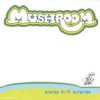 From the Rhodes electric piano and Mellotron sounds of Jazz Fusion in full flight to full-tilt San Fran freak out, Mushroom have to be one of the more noodling of bands to listen to. Free form shenanigans mix the melodic and mellifluous with the crazed and psychedelic – a good times band who are prepared to expend their energies on jumping the instrumental guitar-bass-drums-keyboards groove format through some mostly engaging if familiar hoops.
From the Rhodes electric piano and Mellotron sounds of Jazz Fusion in full flight to full-tilt San Fran freak out, Mushroom have to be one of the more noodling of bands to listen to. Free form shenanigans mix the melodic and mellifluous with the crazed and psychedelic – a good times band who are prepared to expend their energies on jumping the instrumental guitar-bass-drums-keyboards groove format through some mostly engaging if familiar hoops.
They’re obviously entirely competent and inventive musicians, paying attention to the little details as well as the bigger picture while letting the less smooth moments remain as an integral part of their sound. Analog Hi-Fi Surprise is very much a record to get lost in, providing the mood is right for such frankly muso explorations; if the time is right for extended chirruping electric piano riffs, then this is the album to listen to. If not, then it can be nothing short of Proggish, verging on the smug even, as the band plough their own particularly freaked furrow with dedicated intensity. This is done to best cyclical effect on “A Song Of Rememberance For A Time When Wife Swapping Was Considered Politically Correct” which has some nicely decomposing sax work among the semicontrolled feedback, mellow passages and interpolated synth bleeps and solid bassline chug of a jam in full flow. As the workout segues into “The Evolution Of Smells In An Underground Parking Garage After An All Night Rave”, the temptation to infer a correlation between length of track title and quality of the work fades when the guitars start to soar off into heroic arenas. Matters become somewhat more subtle in a lengthy breakdown of the musical components into considered melancholy for the second stage though.
Ultimately, that’s entirely about personal preference, so it’s worth noting that the moments of wistful meandering like “October 1970” with its pseudo-violin into and flute wafts is both gently evocative and somewhat dreamy; nice, even, and then “Our Buddy Miles” rolls in on a head-shakingly upbeat Jazz tip, all fuzz-wah and tremelo-arm guitar and Funky organ runs. “Abbie Hoffman” has a satisfyingly ecstatic conjunction of guitars, spontaneous electronic noises and keyboard interaction with the rhythm section going on, instantly calling oil-pattern projections, lysergically-influenced goatee beards and flower-patterned clothes to mind. When the inevitable retro-worshipping Kojak film appears, it’d be substantially improved if Mushroom were recruited for the soundtrack.
-Antron S. Meister-
Mushroom – Foxy Music
Label: Clearspot Format: CD
 The cover of this CD looks like a cheesy 60s/70s compilation album of top ten hits. In fact the design of the CD itself is a retro glance using the old, pink Island Records label from around 1968. Lift it out of the case and they’ve even borrowed the Traffic band logo from the same era. So, these guys like a little retro.
The cover of this CD looks like a cheesy 60s/70s compilation album of top ten hits. In fact the design of the CD itself is a retro glance using the old, pink Island Records label from around 1968. Lift it out of the case and they’ve even borrowed the Traffic band logo from the same era. So, these guys like a little retro.
No surprise then that their opener “Grooving With Herbie” could have come from one of Traffic’s spacier jams with flute and keyboards over tight bass and drums. Guitars weave in and out and a trombone adds further texture. It’s also reminiscent of some of Miles Davis‘ 70s sounds, though a far less dense brew. “I Got Blisters On My Fingers” reminded me of Man from the early 70s too, that use of keyboards and jangling guitars stretching out over the driven rhythms again. It’s all very nostalgic for those of us who were there first time around. And if any music of that era should be revived I’m glad its this sort. But of course it isn’t just a rehashing of those sounds. They add some interesting quirks of their own. Like when ‘Funk’ comes to mind it’s not likely that the tuba comes with it. But here it sets up a mighty funky bass line on “Joe Namath” and all manner of instruments get laid over it in a timeless jam that contains some inspired ‘snake guitar’ from Erik Pearson. If it’s retro it’s filtered through other sounds and techniques that have evolved since.
Elsewhere you’ll hear intriguing combinations from fairly conventional Jazz/Funk/Rock to electronic noise and samples of Swiss bells. “I Had Some Dreams, They Were Clouds In My Coffee” is a floating hallucinatory experience featuring sitar and cornet. It’s full of shifting soundscapes that build and fade to create an open ended ambience. My personal favourite is the final track “For Men With Beards” with its languid brass theme which mutates into cool trumpet and sax improvisations. Some voice samples intrude before the brass returns to the opening theme and takes the tune to a long closing statement. It is perhaps the most conventionally Jazzy piece on the CD and is over too soon.
Mushroom may have a fondness for music of an earlier era but it doesn’t sound dated since it is more of a starting point from which to build their spacey jamming and sampling. If you fancy this I’d also recommend their 1999 Clearspot album Analog Hi Fi Surprise.
-Paul Donnelly-
Muslimgauze – Drugsherpa
Label: Staalplaat Format: 3″ CD
 They use to call this “the torture of the incessant bell”. A sonic deterrent to crime that itself was drummed into the heads of the people living around it. And this proposes an interesting wrinkle to Muslimgauze – the critique of legend. Releases sprout across the racks and yet how much will ever be known about the man, the methodology – the myth? Already growing and grown. One would think that our more progressive high-school-prom DJs would inculcate these recordings every June into the consciousness of those Bryn Jones wanted to reach: those unaware of the struggle for Palestine, and the greater Arab question at hand.
They use to call this “the torture of the incessant bell”. A sonic deterrent to crime that itself was drummed into the heads of the people living around it. And this proposes an interesting wrinkle to Muslimgauze – the critique of legend. Releases sprout across the racks and yet how much will ever be known about the man, the methodology – the myth? Already growing and grown. One would think that our more progressive high-school-prom DJs would inculcate these recordings every June into the consciousness of those Bryn Jones wanted to reach: those unaware of the struggle for Palestine, and the greater Arab question at hand.
As for the music – it foxy roxx my world, and my afterlife.
-David Cotner-
Muslimgauze – From The Edge
Label: Chlorophyl Format: 12″
Spanning three 12″ only releases in which ten artists remake an unreleased Muslimgauze track, this latest project to tackle and develop on the already massive life work of Bryn Jones finds its first disc in suitably diverse style. Chris And Cosey settle on a doomy Techno Dub infusion, rippling on massed reverb effects and shimmering with a dark elation which is ultimately engrossing. The Higher Intelligence Agency apply their talents with dense percussive intricacy, a ghostly Islamic vocal sample chanting mournfully into the echoing aether, the resulting beat-heavy drift leaving the sourceinstantly recognizable even though smoothed over with a new Fourth World edge.
Further laid back electronic dubscape rhythms characterise Jonah Sharp AKA Spacetime Continuum‘s deeply chilled mix, a sleepy track which folds into itself for a trailing conclusion. Last up is series convener John Goff in Silver Wizard guise, whose slow-burning approach takes its time with the unrevelling of a mix which combines phased tones with further Dubwise tricknology to build a gliding composition of pulsations and snaps which retains the essential Muslimgauze sense of menace.
-Freq1C-
Muslimgauze – Hummus
Label: Soleilmoon Format: CD
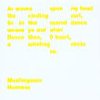 Hummus is the first Muslimgauze release of 2002. It’s quite a mix. Wonderful upbeat ambient tracks sit next to fast and furious numbers like “Zebb ul ala el Din” tear out of CD player, barbed and jagged, with abrupt ends and sharp edges, saturated with distortion and tape noise. You don’t just listen to this album, it grabs you by the throat and pins you against the wall and hits you with short frantic disjointed blasts and blankets of distortion that come from nowhere and go nowhere.
Hummus is the first Muslimgauze release of 2002. It’s quite a mix. Wonderful upbeat ambient tracks sit next to fast and furious numbers like “Zebb ul ala el Din” tear out of CD player, barbed and jagged, with abrupt ends and sharp edges, saturated with distortion and tape noise. You don’t just listen to this album, it grabs you by the throat and pins you against the wall and hits you with short frantic disjointed blasts and blankets of distortion that come from nowhere and go nowhere.
Then, equally out of nowhere, dreamlike and tranquil tracks like “Daughter Of The King Of China” appear – droning, mesmerising, and beautiful. The first part goes on for over 12 minutes. This is one confusing point I noticed about the CD, although the back lists 19 tracks many of these run into each other. I know, it’s a small point. If it mattered at all it soon paled into insignificance when I listened to the CD.
Bryn Jones’ output was prolific, sometimes releasing as many as three albums a year. The release of posthumous albums is just as prolific. In a way this is wholly appropriate, I’m sad to say. Muslimgauze was originally motivated by the plight of the Palestinians, and the grounds for motivation are as strong as ever. If you’ve been anywhere near a television or newspaper recently you’ll have seen the situation in the West Bank occur and reccur with a depressing frequency.
-iChannel0-
Muslimgauze – The Inspirational Sounds Of Muslimgauze
Label: Universal Egg Format: CD
 Part of the Universal Egg series in which Zion Train showcase some rare and out of print tracks in association with their favourite influential artists, The Inspirational Sound Of Muslimgauze draws on the Staalplaat limited editions Jaal Ab Dullah, Izlamaphobia, Fatah Guerrilla, Mullah Said and Azzazin. And what a selection – “Azzazzin II” meshes Industrial clang with ominous analogue filters and some quite disturbing moans; “Shimmer Then Disappear II” has one of the grooviest Muslimgauze beat loops heard in a long time – naturally, taken to the cleaners and wedded to as much bass as the speakers can stand.
Part of the Universal Egg series in which Zion Train showcase some rare and out of print tracks in association with their favourite influential artists, The Inspirational Sound Of Muslimgauze draws on the Staalplaat limited editions Jaal Ab Dullah, Izlamaphobia, Fatah Guerrilla, Mullah Said and Azzazin. And what a selection – “Azzazzin II” meshes Industrial clang with ominous analogue filters and some quite disturbing moans; “Shimmer Then Disappear II” has one of the grooviest Muslimgauze beat loops heard in a long time – naturally, taken to the cleaners and wedded to as much bass as the speakers can stand.
This is the pain and pleasure of each Muslimgauze release, especially those compiled from the numerous short-run records which emerged both before and since Bryn Jones‘ death in January 1999 – each fragment of a whole just drives the craving for more of his (or their as Jones preferred to refer to his “band”) relentlessly hypnagogic, (political) consciousness-raising music. The charge often levelled that all Muslimgauze releases sound the same really has been knocked off whatever perch of truth it once possessed, and it seems that the evolution of the sound was proceeding at hypersonic pace in the months before Jones’ sad demise.
There’s enough of everything on this record to please anyone who’s encountered the uniquely percussive range of Muslimgauze’s release over two decades, from the tabla and grinding whines of “The Sari Of Cholera” via the cut-up discordant clatter and wheeze of “Hakeem Alkimi” into the minimal slap-back analogue Dub, echoed drum-strikes and enigmatic voices of “Muslims Die India 1”. This is a superb compilation, and takes its place easily in the broad ranks of “Best of Muslimgauze” releases as both starting point and place to catch-up for neophytes and enthusiasts alike.
-Linus Tossio-
Muslimgauze – The Inspirational Sounds Of Muslimgauze (A Second Opinion)
The birds fly free and the woman’s voice calls for the best of. Did he forsee his own death, when writing any of the later pieces? Intrigue is tendered and whither goeth the lowered truck through the streets of Tel Aviv, blastin’ these songs? Oh, and typos rock. “Fatah Guerilla” raids Messmer‘s tomb and projects all the power that it contains. The boulders roll off the top of the sepulchre, into the sandy pit below. What criteria were used to cull these tracks? There are so many from which to choose…it is unclear.
And yet the majority of reviews treat his work as a headstone, rather than a hope.
-David Cotner-
Muslimgauze – Kashmiri Queens
Label: Muslimim Format: CD
 Built around an intricate maze of harmonium drones, reverbed tape loops and hand percussion, with the Kashmiri Queens of the title presumably referring to the wordless vocal samples peppering the 11 untitled tracks. The mood here is occasionally heavy but largely open, as the backdrop shifts relentlessly from the opening expanses of thrumming, wheezing and vocalising into more electronically-treated elements as the rhythms become tighter and more mechanistic, especially when based on what sounds like clattering scissor loops. There’s plenty of dynamics available in the sound of a harmonium alone, as the rush of air through the reeds sets up its own internal rhtyhms, which Bryn Jones manipulates to greater or lesser extent on the majority of the tracks to counterpoint the steady groove of the beats, both taped and real.
Built around an intricate maze of harmonium drones, reverbed tape loops and hand percussion, with the Kashmiri Queens of the title presumably referring to the wordless vocal samples peppering the 11 untitled tracks. The mood here is occasionally heavy but largely open, as the backdrop shifts relentlessly from the opening expanses of thrumming, wheezing and vocalising into more electronically-treated elements as the rhythms become tighter and more mechanistic, especially when based on what sounds like clattering scissor loops. There’s plenty of dynamics available in the sound of a harmonium alone, as the rush of air through the reeds sets up its own internal rhtyhms, which Bryn Jones manipulates to greater or lesser extent on the majority of the tracks to counterpoint the steady groove of the beats, both taped and real.
His occasional yelps and throaty utterances convey an ecstatic state and perhaps anger too, but overall the mood is more meditative than militant. As with the ritual Nyabinghi drumming of the Rastas, the circling hypnosis offered by the percussion soon promotes inward listening, and Kashmiri Queens jogs along more than pleasantly on a wave of shifting drop-outs and synthetic ethnography. Anyone wanting a Muslimgauze album with less harsh manipulations and plenty of immersive trance qualities than some of the recent archival unearthings could do worse than obtaining this one, and then setting it on repeated shuffle play to accompany a few well-chosen herbs and spices.
-Antron S. Meister-
Muslimgauze – Lo-Fi India Abuse
Label: BSI Format: CD
 Tabla. Whistle. Cries. Rhythm. Huzzahs. Hisses. Whirring. Rhythm. Distortion. Thrumming. Bass. Rhythm. Stops. Starts. Chirps. Rhythm. Muttering. Echoes. Cut-ups. Rhythm. Warbling. Scuttling. Buzzes. Rhythm. Superimposition. Melodies. Endings. Rhythm.
Tabla. Whistle. Cries. Rhythm. Huzzahs. Hisses. Whirring. Rhythm. Distortion. Thrumming. Bass. Rhythm. Stops. Starts. Chirps. Rhythm. Muttering. Echoes. Cut-ups. Rhythm. Warbling. Scuttling. Buzzes. Rhythm. Superimposition. Melodies. Endings. Rhythm.
-David Cotner-
Muslimgauze – Hamas Cinema Gaza Strip
Label: Staalplaat Format: CD
 Apparently the pressing plant were not especially keen on the text and artwork for Hamas Cinema Gaza Strip, and refused to print the jewel case cover insert for this CD on the basis that “Sony DADC does not want to be related to ‘political propaganda'”. So Staaplaat had to get the printing done elsewhere; perhaps this isn’t so surprising during a climate of terror and counter-terror, but it’s interesting that the pressing plant didn’t refuse to put the music onto the discs.
Apparently the pressing plant were not especially keen on the text and artwork for Hamas Cinema Gaza Strip, and refused to print the jewel case cover insert for this CD on the basis that “Sony DADC does not want to be related to ‘political propaganda'”. So Staaplaat had to get the printing done elsewhere; perhaps this isn’t so surprising during a climate of terror and counter-terror, but it’s interesting that the pressing plant didn’t refuse to put the music onto the discs.
This brings the question of whether the music of Bryn Jones is “political propaganda” in itself, without attached titles like “Yasser Arafat In Tunis”, “Hizbollah Radio Advert” or the title track? How about “Jerusalem Artichoke” or “Balti Utensil”? As for the pictures, while the veiled women on the cover might be supporters or members of Hamas, without a working knowledge of Arabic, it’s difficult to tell. Perhaps the company were frightened off by the back catalogue and reputation of Muslimgauze, or maybe just the name? A quick random check of Staalplaat CDs shows that Sony DADC didn’t have a problem with titles like Baghdad, Your Mines In Kabul or Speaking With Hamas, but perhaps it’s because there weren’t American and other troops milling around the area when those titles were released, just warlords fighting over territory scattered with Soviet mines. Or maybe it was that when the Intifada in Palestine was running at a level of hurled bricks and returned live fire rather than weekly suicide bombs and tank battalion revenge and before a wave of Islamophobia (another Muslimgauze title – did Sony press that one?) was sweeping European politics, then business was just business?
As far as the music goes, there’s plenty of vocal samples from around the Muslim world of fist-raised aspect, no doubt sourced as ever from TV and radio, woven into a series of sinuously percussive tracks. The mood here is militant but not nearly so abrasive as some of the recent posthumous releases in most cases. Instead, the rhythms fracture easily, skip from brittle flurries of hand drum rolls to a loping bass loop or an uncoiling shudder of echoed dubwise Arabic-influenced grooves. The mood of the disc feels determined more than angry, the undulating waves of tape-splice glitches and cut-up beats quivering with a tension which rises to a HipHop-tinged surface with the impassioned breakbeat chug of “Jerusalem Artichoke”.
The shuddery vibrations further expand sidewards to the spasming strings and quivering, distended rhythms of the evocatively-named “Rent A Hookah” and the yet more bulbous tabla’n’bass of “Balti Utensil”. This latter concludes the album with an overlaid flute melody to counterpoint the chiming percussion which in turn offsets the progressively more distorted rhythm which soon dominates the conclusion in a squitter of extended repetition and a Dubbed-up miniature coda of Reggiefied mellowness. Throughout Hamas Cinema Gaza Strip, the interjection of ullulating women, jet aircraft swoops, documentary-flavoured environmental recordings and rippling water among those ever-hypnotic voices from the aether makes for a ponderously intoxicating downbeat addition to the Bryn Jones oeuvre. But is it propaganda?
-Antron S. Meister-
Muslimgauze – Remixes Volume 2
Label: Soleilmoon Format: CD
A young Chicano alpha-male at my former place of work responded quite well to these recordings. The titles meant nothing to him, nor did the political theses behind these pieses. The events surrounding Bryn Jones‘ death – and a certain mesmerising quality to the music – did, however. What was more captivating? I don’t work there anymore – beats me.
Yet the question of “response” is something yet-to-be-examined when it comes to Muslimgauze, and the attendant world he built for himself. What are people responding to, concerning his sound, his music? Is it the numerous releases? The unusual packaging? Is it the voices from worlds away; the overriding rhythms? Open forums for such things amongst his peers are lacking – fuck, most forums amongst people creating experimental music are few and far-between the cracks. And yes, that’s an obscenity you see. Qualifying the sounds of a Muslimgauze album is a done deal. A bag of adjectives is rife and rifled through; parallel criticisms ensue. But what of the political agenda of Bryn Jones? What do his sounds represent? What do they re-present? There was a time when much was made about the money from these releases going towards pro-Arab organisations – Hamas, Hezbollah, PLO, etc.. Have these claims been substantiated? To what extent was the aid accepted, and was the source of that aid revealed to the recipients? Was there a will, bequeathing subsequent monies accured from releases to those pro-Arab insurgencies?
It is rare for music in this field to carry such an openly political slant – and not have those politics openly questioned. Was Bryn Jones’ final re-mix that of expectations?
-David Cotner-
Muslimgauze – Speaker Of Turkish
Label: Soleilmoon Format: CD
 Wallowing in the hazy mists drifing across a backmasked pan-Arabian sea of ethnotronic dub and shivering with brightly-struck pecussion, Speaker Of Turkish uncoils with langourous, leisurly bass and rhythms keeping time at a rolling pace. There are wafts of breathy pipes and shards of brittle tapeloops clashing in the mix too, liquid morasses bubbling up between chiming bells and ghostly voices from and about the Muslim world.
Wallowing in the hazy mists drifing across a backmasked pan-Arabian sea of ethnotronic dub and shivering with brightly-struck pecussion, Speaker Of Turkish uncoils with langourous, leisurly bass and rhythms keeping time at a rolling pace. There are wafts of breathy pipes and shards of brittle tapeloops clashing in the mix too, liquid morasses bubbling up between chiming bells and ghostly voices from and about the Muslim world.
One of the key aspects of Jones’ method was that he eschewed the use of digital samplers, and his fondness for constucting his unique music by razor cut and the splicing of tape imbues his edits with a particular sound, the ever present echoes and flickering reverb layering a fug as dense as that of a basement full of contented shisha-tokers. This is some of Bryn Jones‘s most finely textured work, though the soothing balm of lengthy tracks like the melliflously relaxing “Turkish Speaker” or the hypnagogic, slow-burning hiss’n’shuffle of the deftly-constructed “Bedouin Tablet” are still coiled around a musical heart which pulses with a fervent passion for his subject. Likewise, the two versions of “The Good Musilm” are sprinkled with fractured percussion debris, clicking and clattering around the central rhythm which soon gallops into euphoric life, cresting softly in undulating waves redolent of hot winds and exotic enchantments.
It’s a album which at once is a reminder that the passing of Bryn Jones at such a young age was tragic; but also stands as a superb spur to recall that his back catalogue is not only legendarily immense, at over one hundred releases, but that so many Muslimgauze recordings are almost untouchably, achingly beautiful, as is most definitely the case here.
-Linus Tossio-
Muslimgauze – Speaking With Hamas
Label: Staalplaat Format: CD
 Culled personally by Bryn Jones from his extremely limited edition run of albums in 1996 for Staalplaat, Speaking With Hamas brings together some great moments of unique, politically-charged music. Celebrating the struggle and cultures of the Arabic and Islamic (and specifically Palestinian) peoples through sampling of their music could have seemed demeaning, pretentious or yet another form of cultural expropriation, but Muslimgauze never pretended to “authenticity” or even to be of the faith. Instead, what shines through is Dub without Reggae made into a shimmeringly delayed haze of sprightly clanking strings, rattly percussion, and intriguing domestic recordings, with an unwaveringly single-minded commitment to the cause and imaginative depiction of a people far removed from Jones’ Manchester home.
Culled personally by Bryn Jones from his extremely limited edition run of albums in 1996 for Staalplaat, Speaking With Hamas brings together some great moments of unique, politically-charged music. Celebrating the struggle and cultures of the Arabic and Islamic (and specifically Palestinian) peoples through sampling of their music could have seemed demeaning, pretentious or yet another form of cultural expropriation, but Muslimgauze never pretended to “authenticity” or even to be of the faith. Instead, what shines through is Dub without Reggae made into a shimmeringly delayed haze of sprightly clanking strings, rattly percussion, and intriguing domestic recordings, with an unwaveringly single-minded commitment to the cause and imaginative depiction of a people far removed from Jones’ Manchester home.
Where so many Ambient, Fourth World outfits get wishy-washy in their combination of Western and Islamic samples and sounds, opting for the easily danceable or the cod-exotic spicing up of the already-dull or obvious, Muslimgauze casts deeper into the undertow of a virtual Middle East, a non-specific world of faintly menacing otherness. Titles such as “Return Of Black September”, “Palestine Is Our Islamic Land” and “Anti-Arab Media Censor” both set the scene and bait the preconceptions or apparent certanities of Western audiences. The muttered and half-glimpsed radio voices in particular give the feel of an eavesdropped dream, while the stately, rumbling bass sets up chromatic tendrils of edgy unease. The combination of winding sputtering electronic loops with the heavily-effected percussion of “Thuggee” stands out especially as an example of the dynamics of reverberating delay and the interjection of what sounds like a heavy object being dragged across the studio floor, offset with a hypnotic flurry of cymbal trails, metallic chattering and half-heard background words.
Overall, the mood of Speaking With Hamas is a combination of the blissfuly estranged and the obsessively grim. Not music for those in search of blandly-grabbed World Music ambiences, this CD is also not really for those who prefer to regard other cultures as either inscrutable or unassailable through a misguided belief in untouchable purity. As a selection of highlights (with bonus track “Shaheed” to tempt any collector persistent enough to own all the source albums) of one year’s worth of a stupendously prolific career it’s an impressive release indeed.
-Freq1C-
Muslimgauze – Sufiq
Label: Soleilmoon Format: CDS
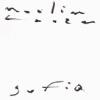 Sufiq is an EP which really brings home the loss to music Bryn Jones’ death was, showcasing nine tracks of his distincitely different take on Middle-Eastern sound sampling. Just check out the titles – “Turkish Sword Swallower”, “The Girl Who Sleeps With Persian Tulips”, and perhaps most evocatively, “The Last Mosque Of Herzegovina” – and place them in the context of rapid-fire loops of marvellous percussion, wind instruments from all over the Islamic world, strings, and bass. Plenty of bass.
Sufiq is an EP which really brings home the loss to music Bryn Jones’ death was, showcasing nine tracks of his distincitely different take on Middle-Eastern sound sampling. Just check out the titles – “Turkish Sword Swallower”, “The Girl Who Sleeps With Persian Tulips”, and perhaps most evocatively, “The Last Mosque Of Herzegovina” – and place them in the context of rapid-fire loops of marvellous percussion, wind instruments from all over the Islamic world, strings, and bass. Plenty of bass.
This is one of the finest Muslimgauze EPs this reviewer has heard – and granted, there are a lot out there waiting to be discovered still – dynamic, even groovy sometimes, and a fearsome beast of rhythmic scatterings and drop-out blasts from the ancient horns, the oud, the ney; all slashing across the complex beats with reedy tones of dread and Dervish trance interruptions and electronic treatments. Add in some of Jones’s more Reggae-derived dubs, and that bass-boom enthralment, and Sufiq becomes a dizzying work, crystalline in its production but also quite capable of darkling enchantment as much as hookah glazing of the eyes.
What is particularly unnerving though is the tendency of tracks to stop dead for half-second pauses – a device which heightens the tension and lets the bass undertow pulse below the surface to good effect too. Volume trickery, surprise returns and monolithic low end capable of crumbling the walls of Jehrico: there’s even a Garagey loop of all things on “Jackal The Invizibl” and something bastardized from House emerging from the murk of “Saracenic Lacquer” (naturally disrupted into something quite subversive) – Sufiq packs voluminous discordancy among the trademark Muslimgauze repetetive beats in a way which transforms the format tangentially until it nearly collapses. Superbly.
-Freq1C-
Muslimgauze – Your Mines In Kabul
Label: Muslimim/Staalplaat Format: 3CD
That title gives a certain indication of Bryn Jones‘ direction onto the Indian sub-Continent and surrounding areas in this album, packaged with three disc jammed (literally) into one jewel case, with track details etc printed directly onto the plastic. Add in the beautifully-printed high-grade paper of the inserts with their disturbingly artistic photos of artificially-limbed survivors of encounters with landmines in Afghanistan and it all adds up to a nicely-done set in a limited edition of 700.
Musically, Mine 1 starts off harsh and keeps on going that way – but harsh and surprisingly funky, with the typical 1998-era stepping groove which Jones was heavily into at that time. Oh yes, and the bass, lots and lots of the stuff. It belches out the rhythms, shakes the harmonics and disturbances of the mid and treble loops, curls up into beats of brain-pounding intensity. The beats themselves fracture, stop for half-breaths, lope across each other with hypnotic irregularity. Jones’ constant evolution and instant self-mixing took him into places which other more-digital, less hand-on producers rarely achieve in the same organic manner. What’s more, it’s all done with tape-loops, cassettes and effects – no samplers, kids.
This is the sort of stuff to drive the listener’s head into a whirling dervish-style of orbit – the rhythmic interation where it all comes from, and thanks to the Muslimgauze methodology of stream of consciousness extended output, the extremes of groove and beat are reached, swept through and taken around the block again and again. As the CD passes through varying percussion styles and levels of distortion, the effect is nearly delerious, thanks especially to the attenuated radio voice cassette samples brought up into sometimes eerie close-up.
From start to finish of the second disc, the percussive onslaught continues, deeper down on the bass, washed across in smears of low end while the metallic thwack of the drums drills nails into the skull. Flutes and other wind instruments make up the closest there is here to melody, tambours, bells, shakers and all manner of clatter and pulse weave into harmonium wheezes, distended bloats of the undertow… In other words, more of the same, doubled and reworked into the stupendous miasma of otherworldly transmissions from an exotic place slightly related to the world of North-South/West-East geopolitical and econimic reality, anchored by imagistic titles – “Tongue Tied In Sind”, “Karakoram Visa Office”, “Paier-Mach�Efiji Of Bishan Bedi”, and most shuddersome, “The Last Tamil Tiger Skinned”.
Finally, the Soleilmoon EP “Lahore And Marseilles” is sped up and extended into “Lahore” for Mine 3 – that’s into thirty-one minutes of chugging rhythms and that fearsome bass again, taken, twisted, run through a noisy spice grinder and dealt out again in coils of spiralled hiss and once-melodic insertions. Queasy may be the word, or staggering, and by the time the track ends in a squitter of accumulated tape-hiss and that same main loop, it almost feels like a trip half way around the world. As a whole Your Mines In Kabul approaches the paradigm of Muslimgauze beat repetition made transcendent; sometimes brash enough but also demanding endurance and immersion.
-Antron S. Meister-
Muslimgauze – (Untitled)
Label: Muslimim Format: CD
 What might as well have the tag Muslimim 028 attached for convenience’s sake continues the series of subscription-only releases of the remaining Muslimgauze back-catalogue in ever-more uprooted electronic form. Join the list and collect the lot, as funds allow; whatever will happen when there are no more master tapes in the legacy?
What might as well have the tag Muslimim 028 attached for convenience’s sake continues the series of subscription-only releases of the remaining Muslimgauze back-catalogue in ever-more uprooted electronic form. Join the list and collect the lot, as funds allow; whatever will happen when there are no more master tapes in the legacy?
Perhaps then it’ll be necessary to stick the whole lot into a series of CD players and let them shuffle on for eternity? Whatever, this CD holds up to the latter era Muslimgauze template of noisy interfence slammed across the stereo mix with face-slapping glee on top of seemingly endless percussion loops. There’s still the Dub inflection there too, and extracted radio voices echoing ghostlike to snap the focus back to a Middle East and Asia where the strife convolves yet further still. These voices demand to be heard against the crushing wail of bombs, teargas and a largely indifferent media cacophony of established facts in the alleys and market places of Jerusalem and in the big stick-enforced no-fly zones, and Jones was always one to give them an airing, however laterally.
Radical, perhaps not so much for Bryn Jones’ oeuvre, but well enough for everyone else.
-Antron S. Meister-
Myer – Pressure Drop/Repercussions
Label: Groove Attack Format: 12″
Two fine breakbeat abstractions from Germany’s ever-improving drum & bass label. “Pressure Drop” is a dub-inflected, slow-burner with an all-too appropriate name: the barometer plunges with the depth-charge bass. “Repercussions” concentrates on clever breakonstruction, tumbling sleights of the sampler and subtle use of delay to build an intricate rhythmic web.
-Freq1C-
